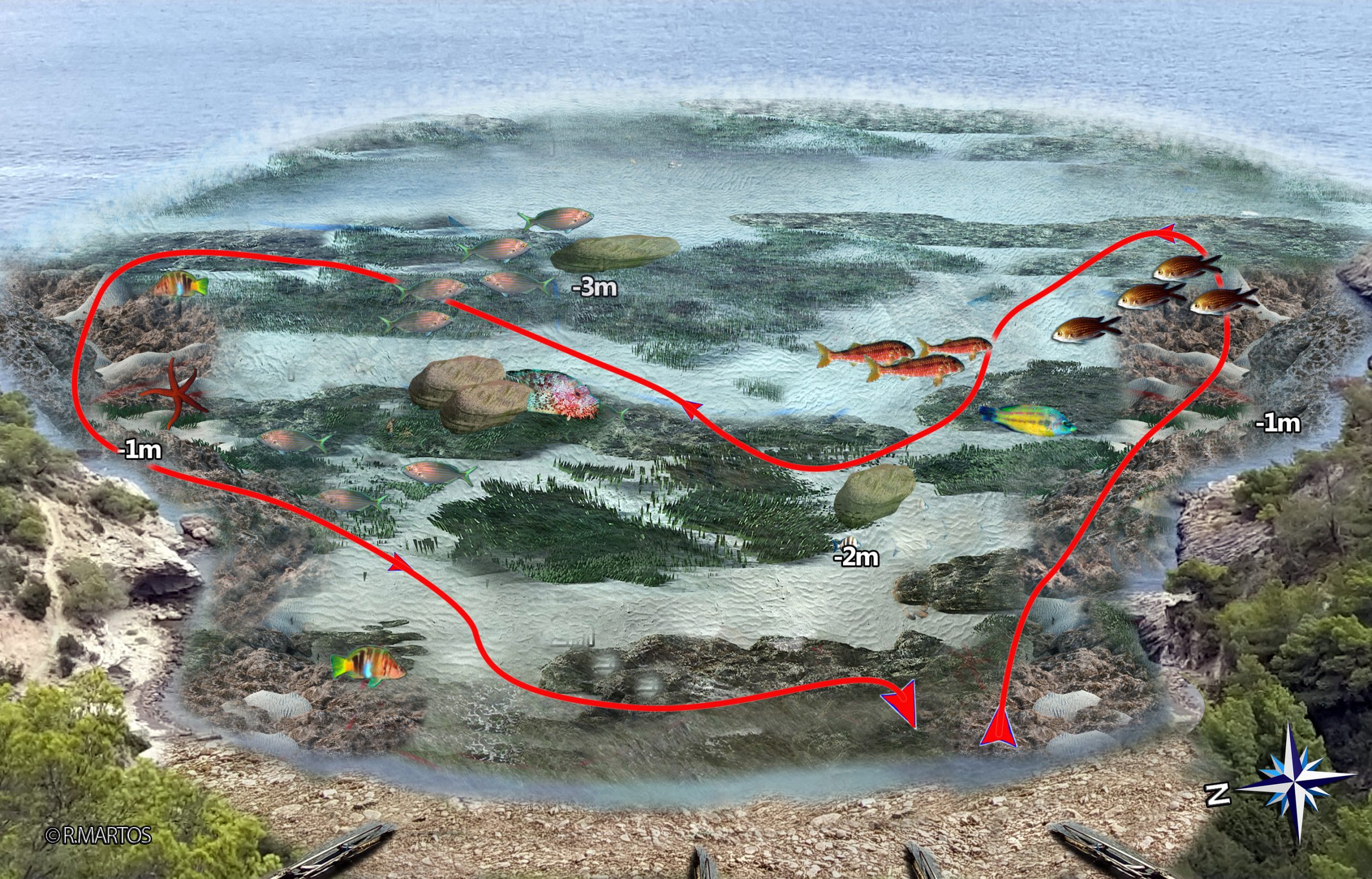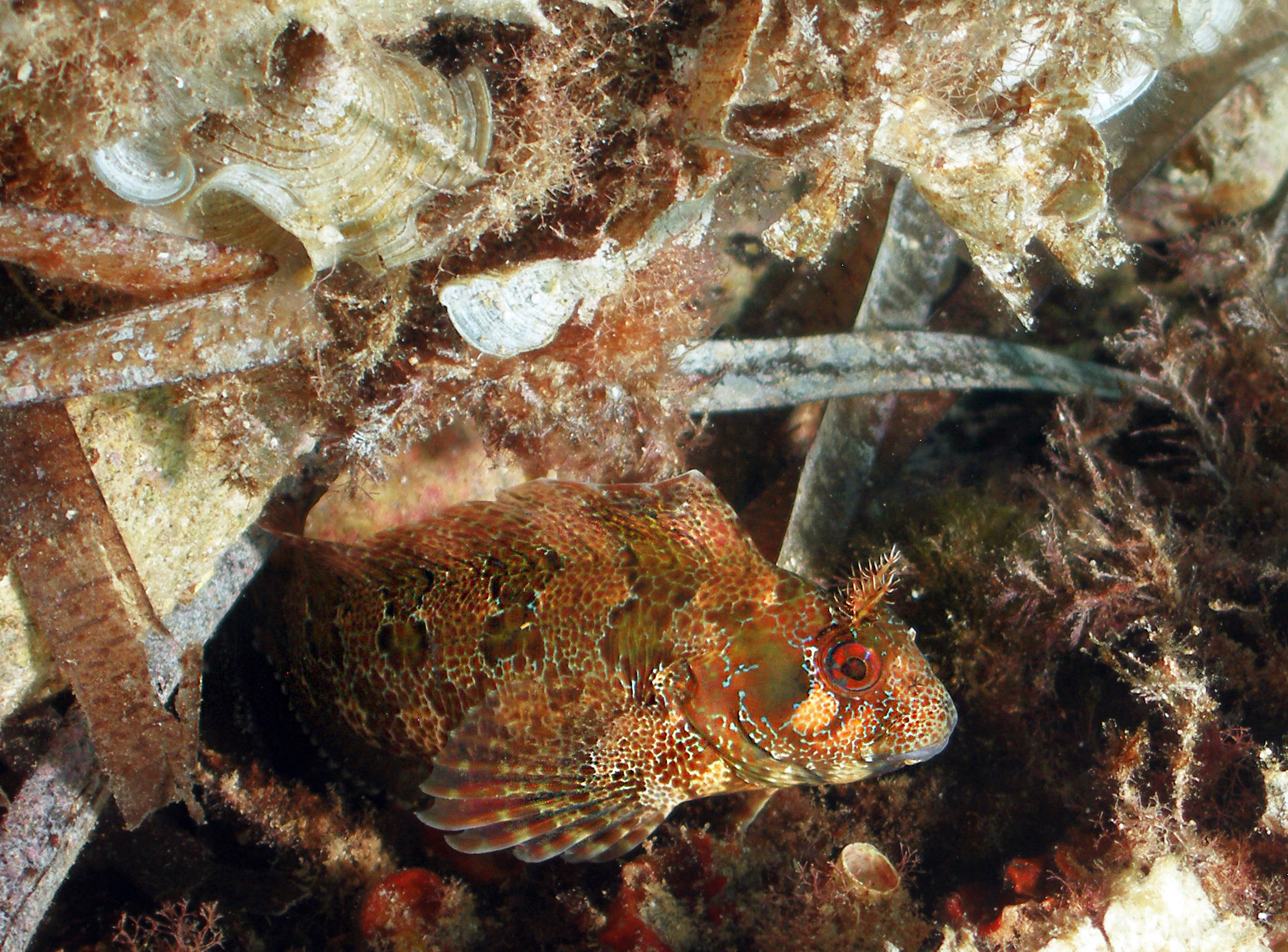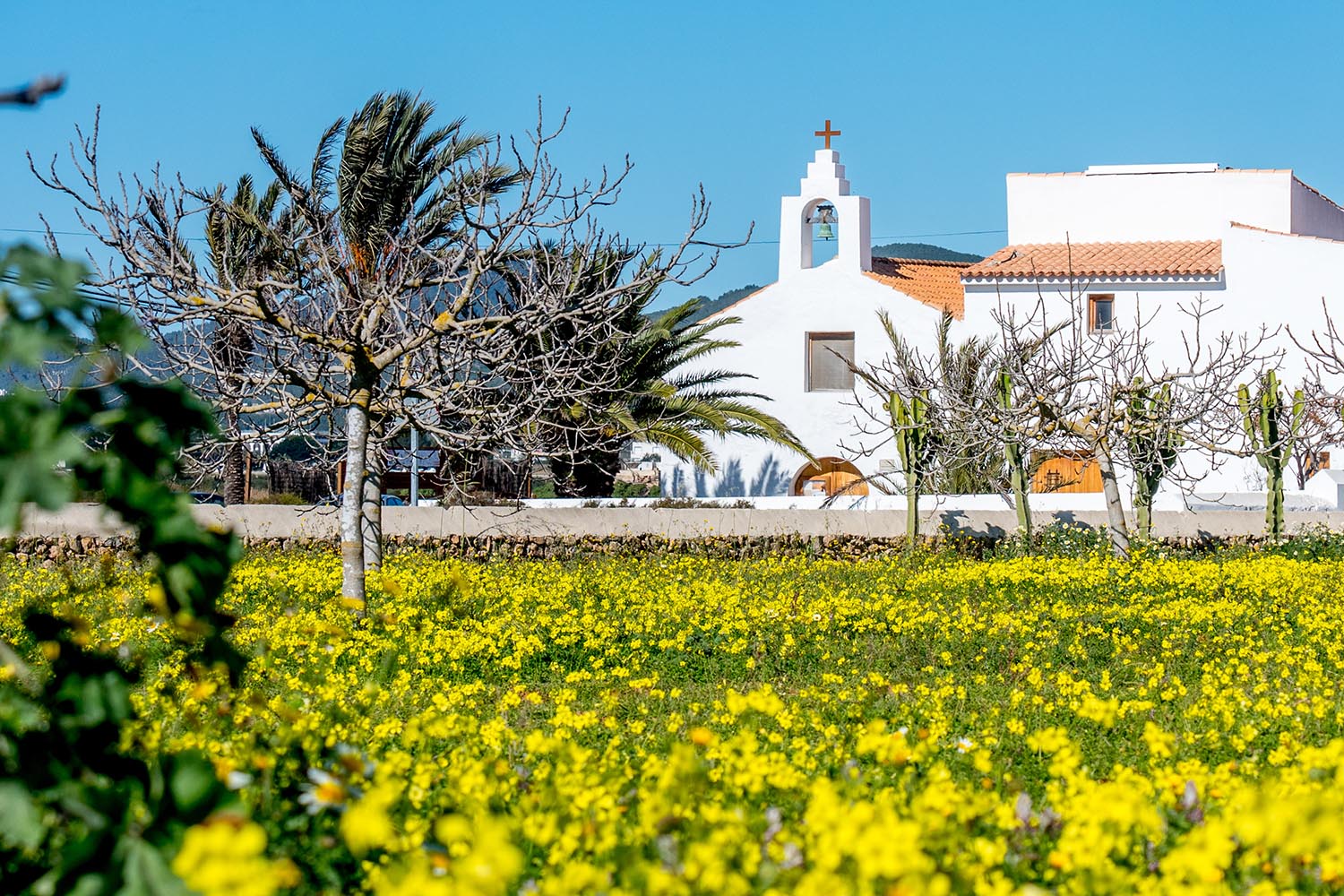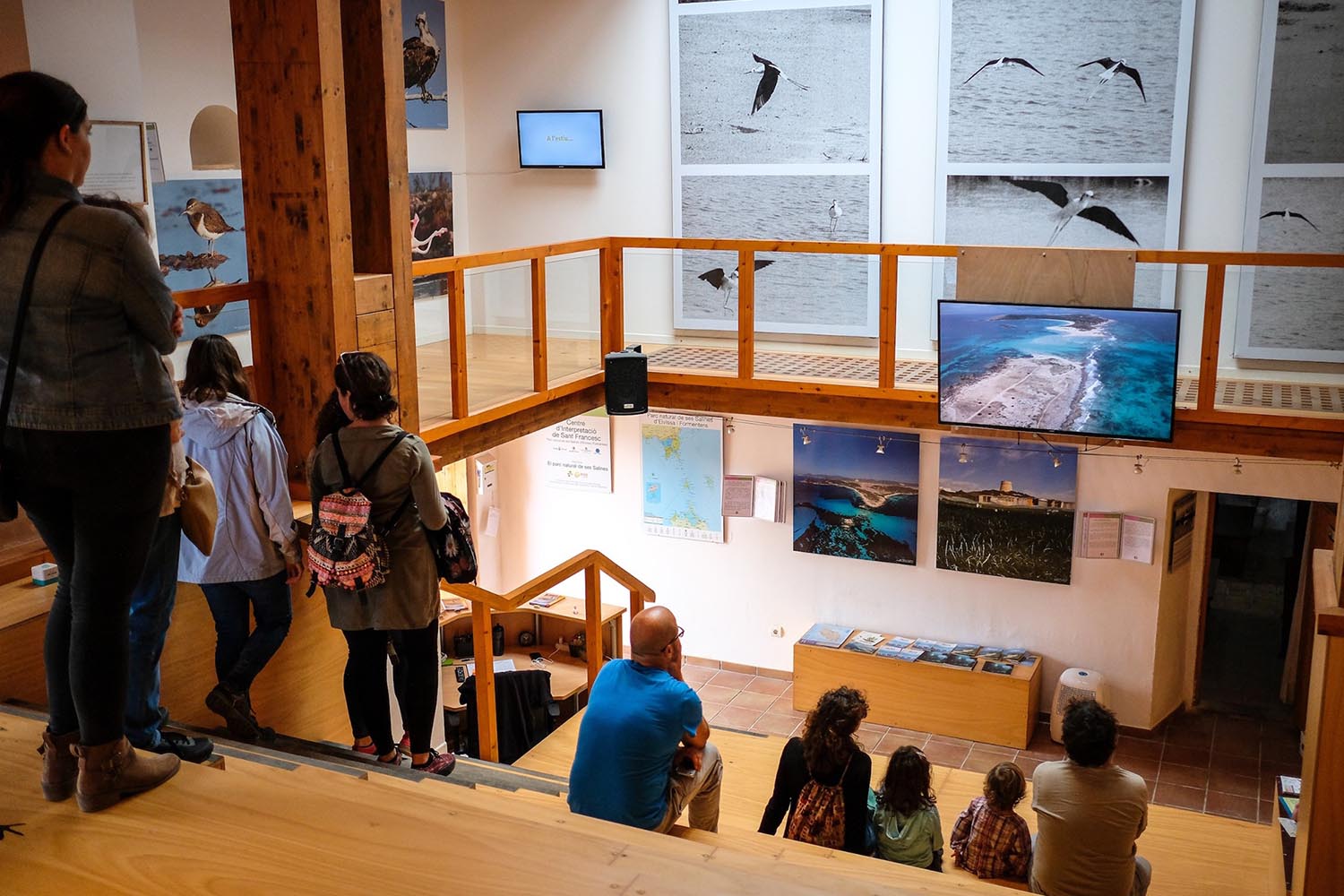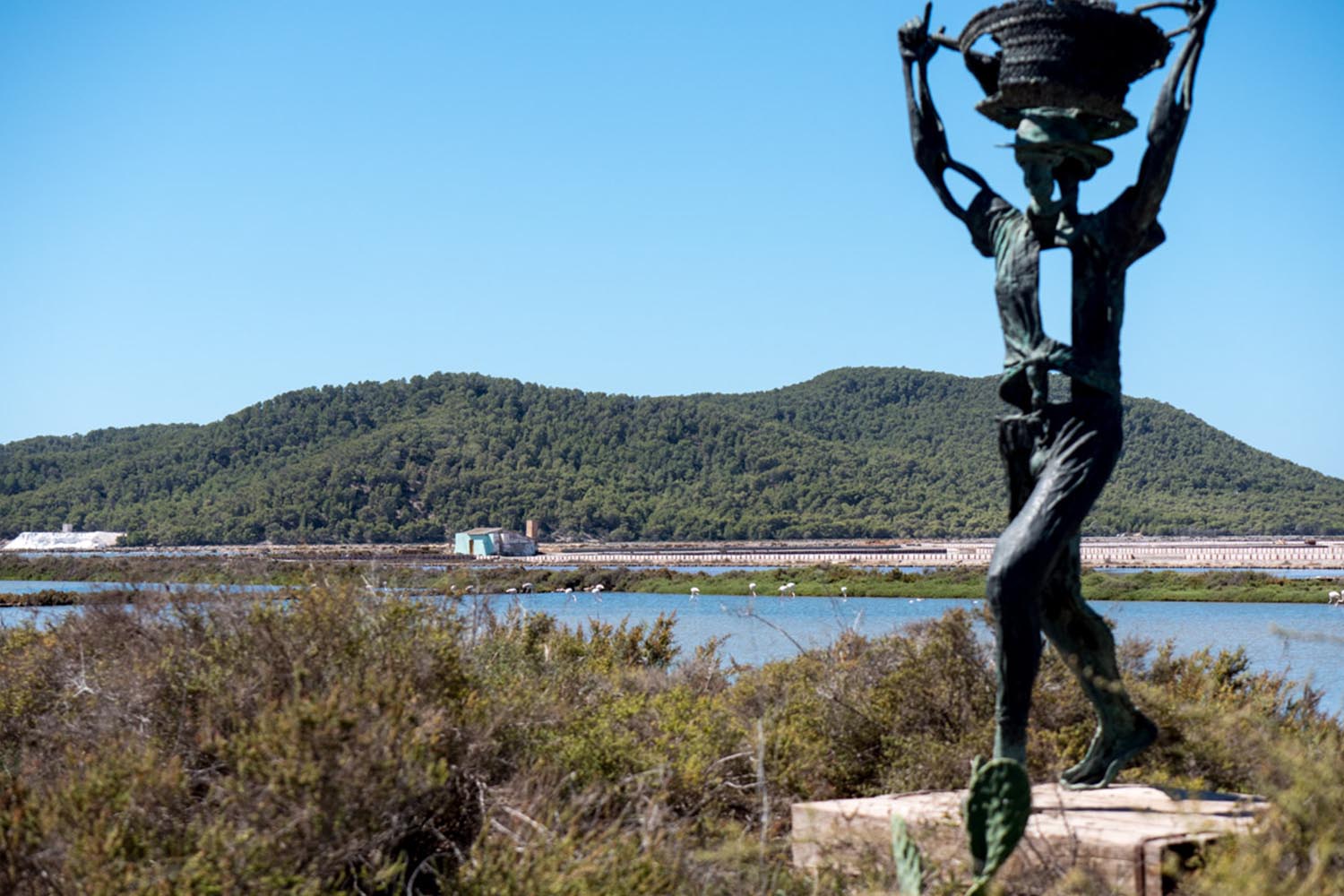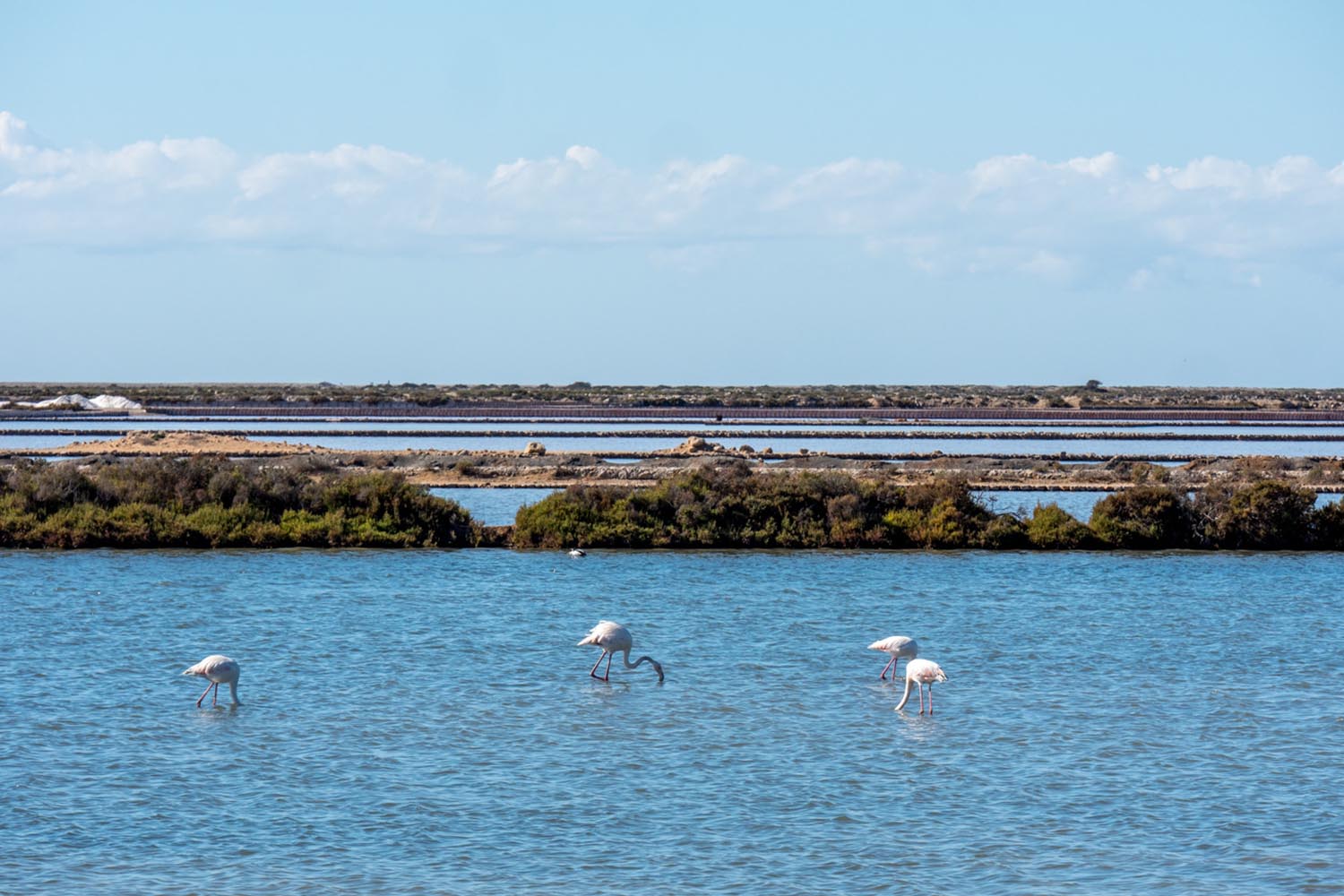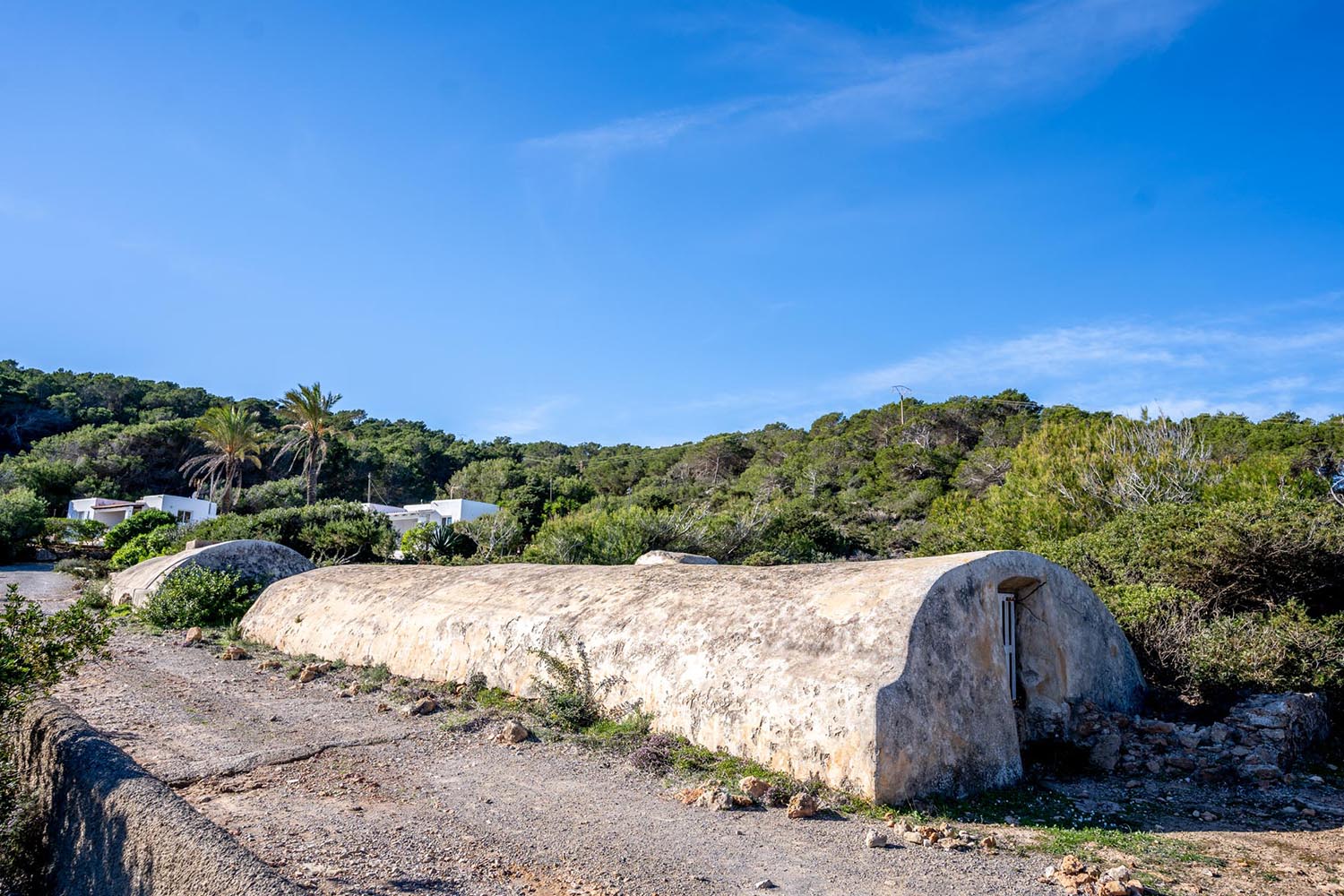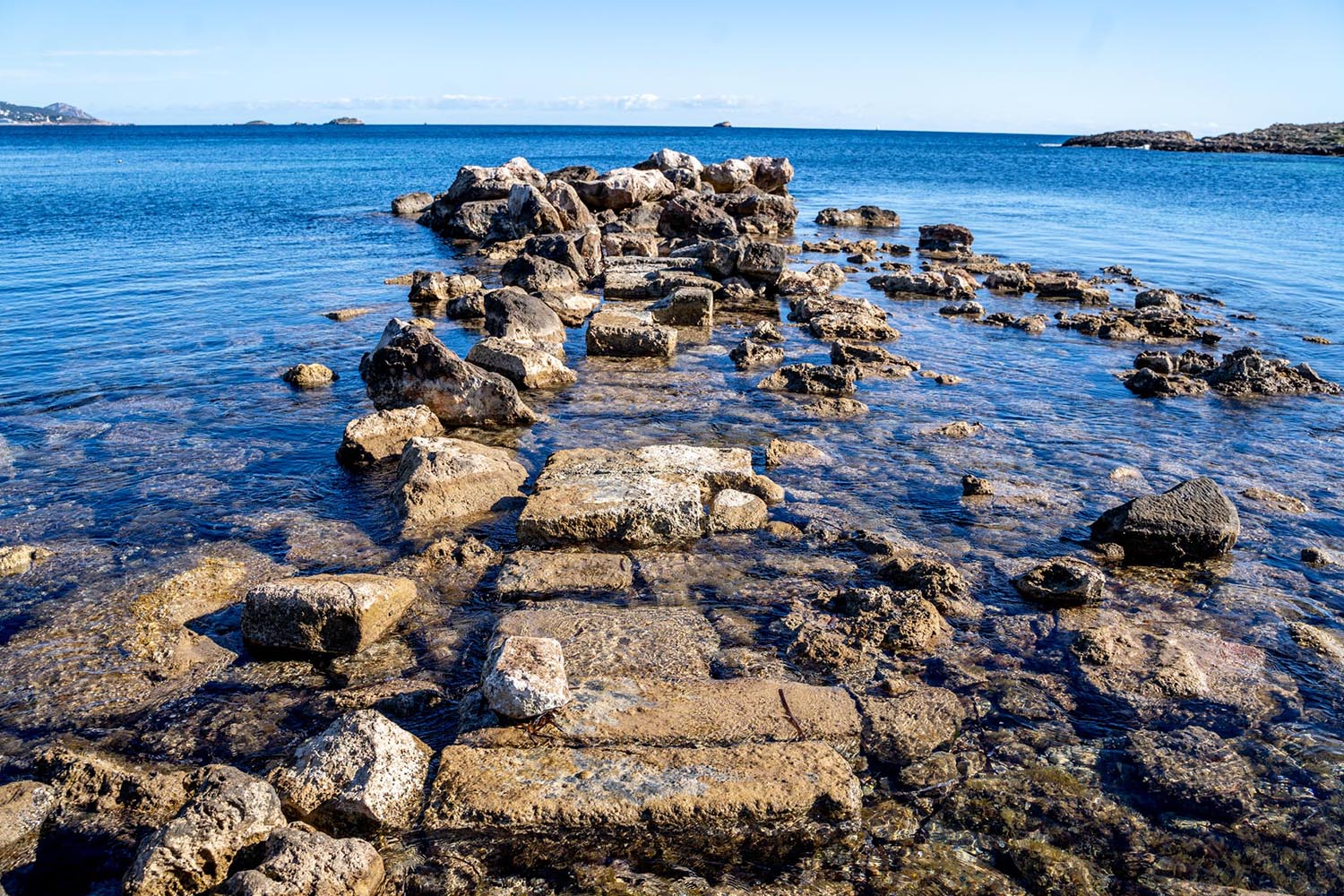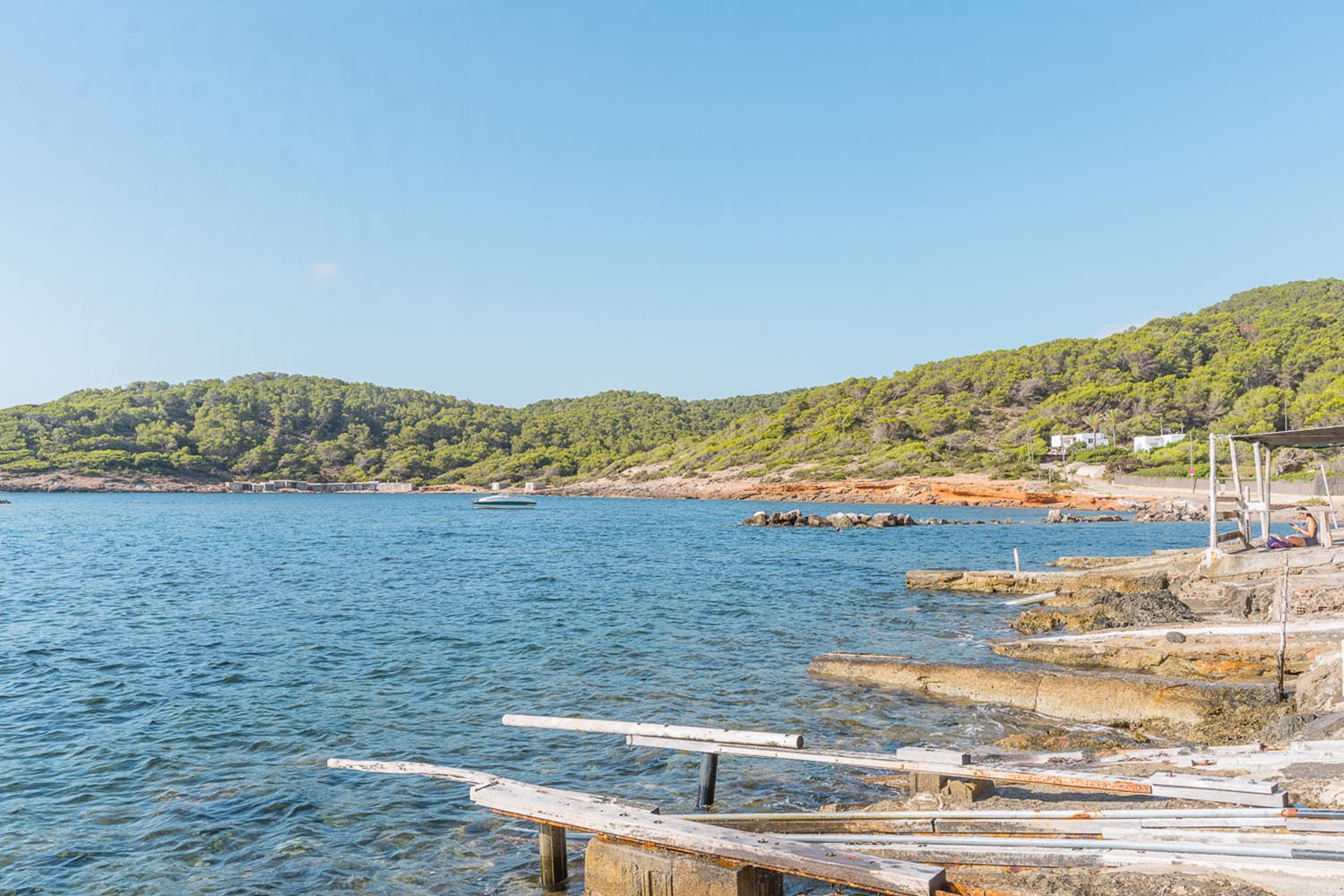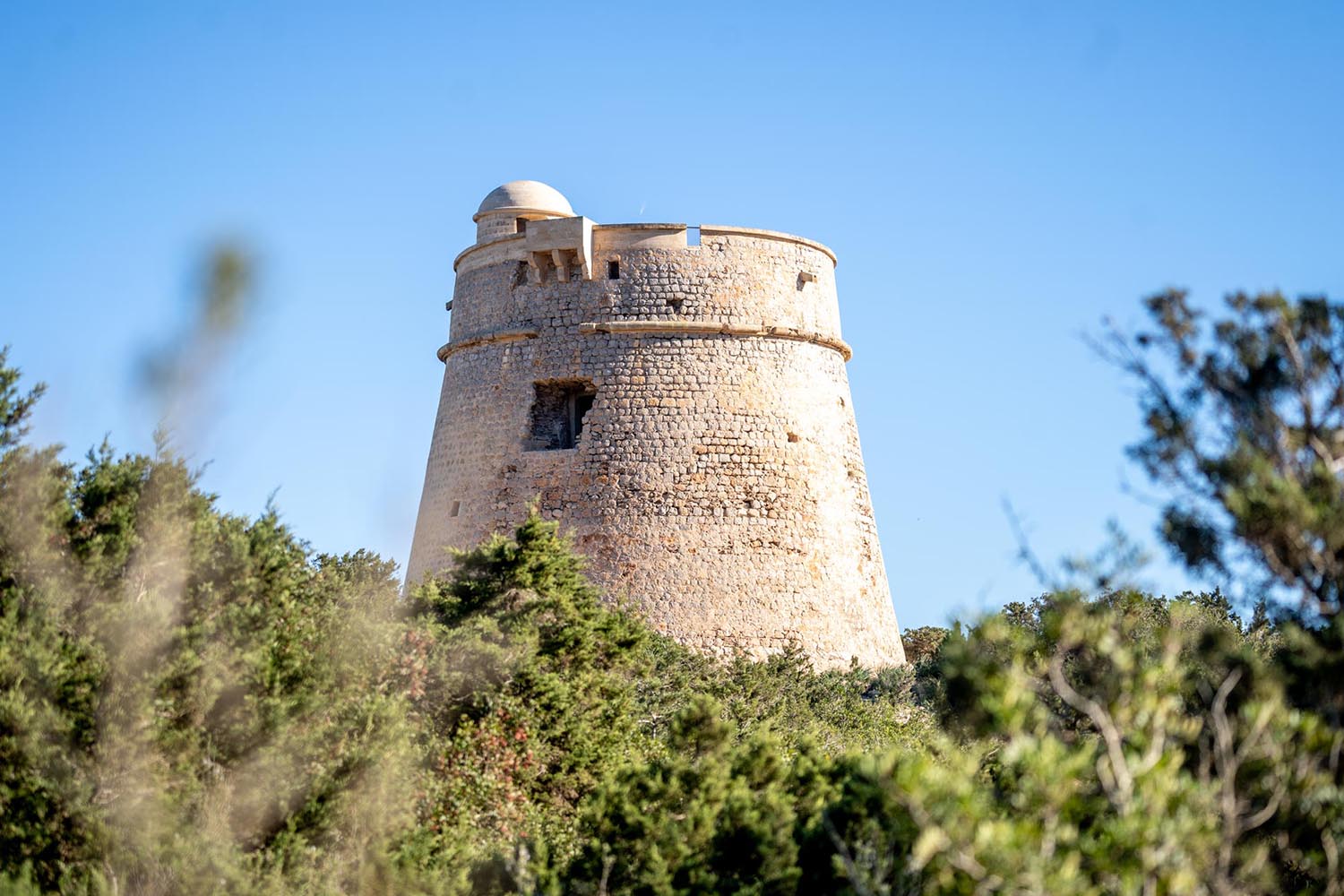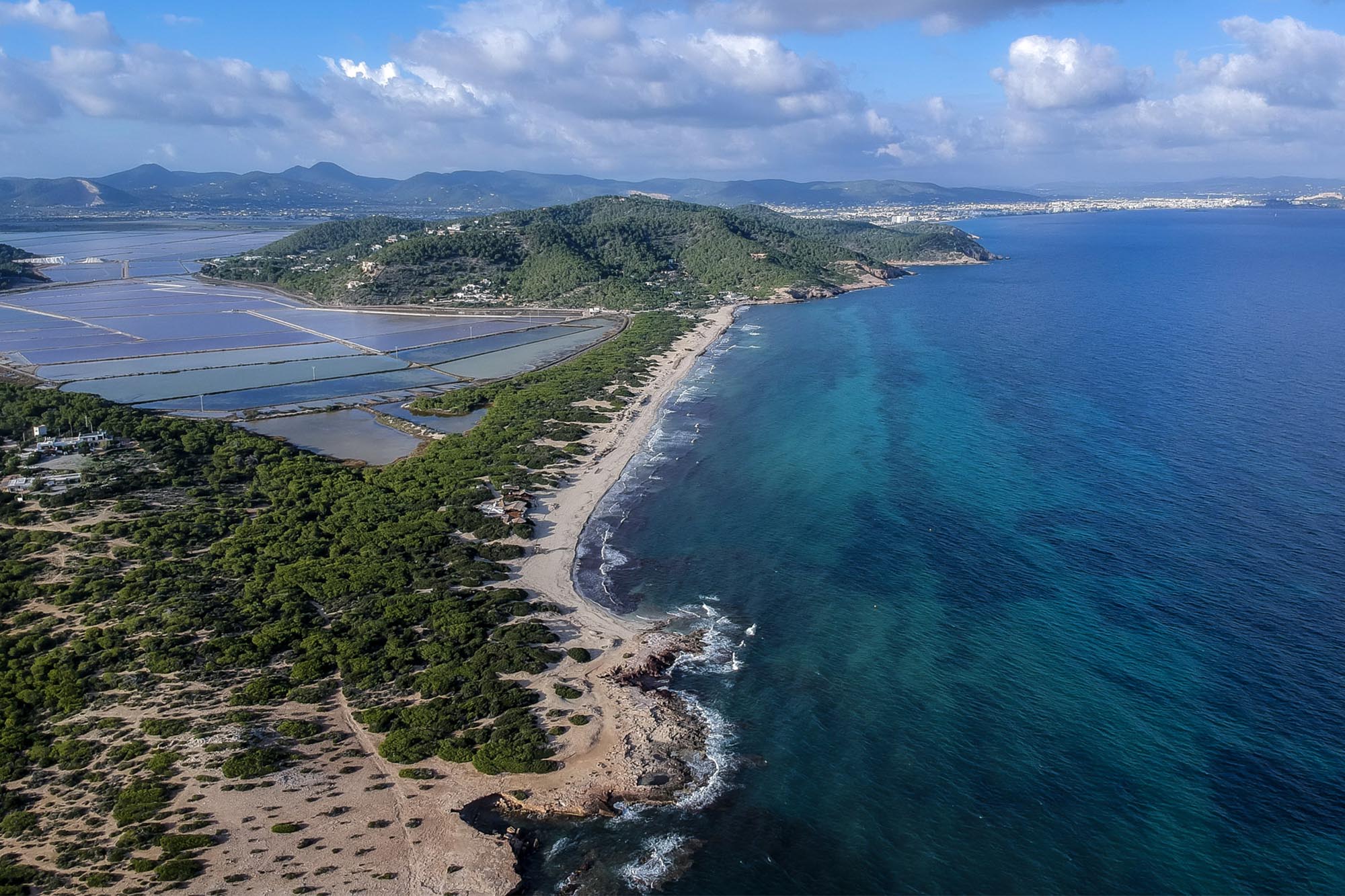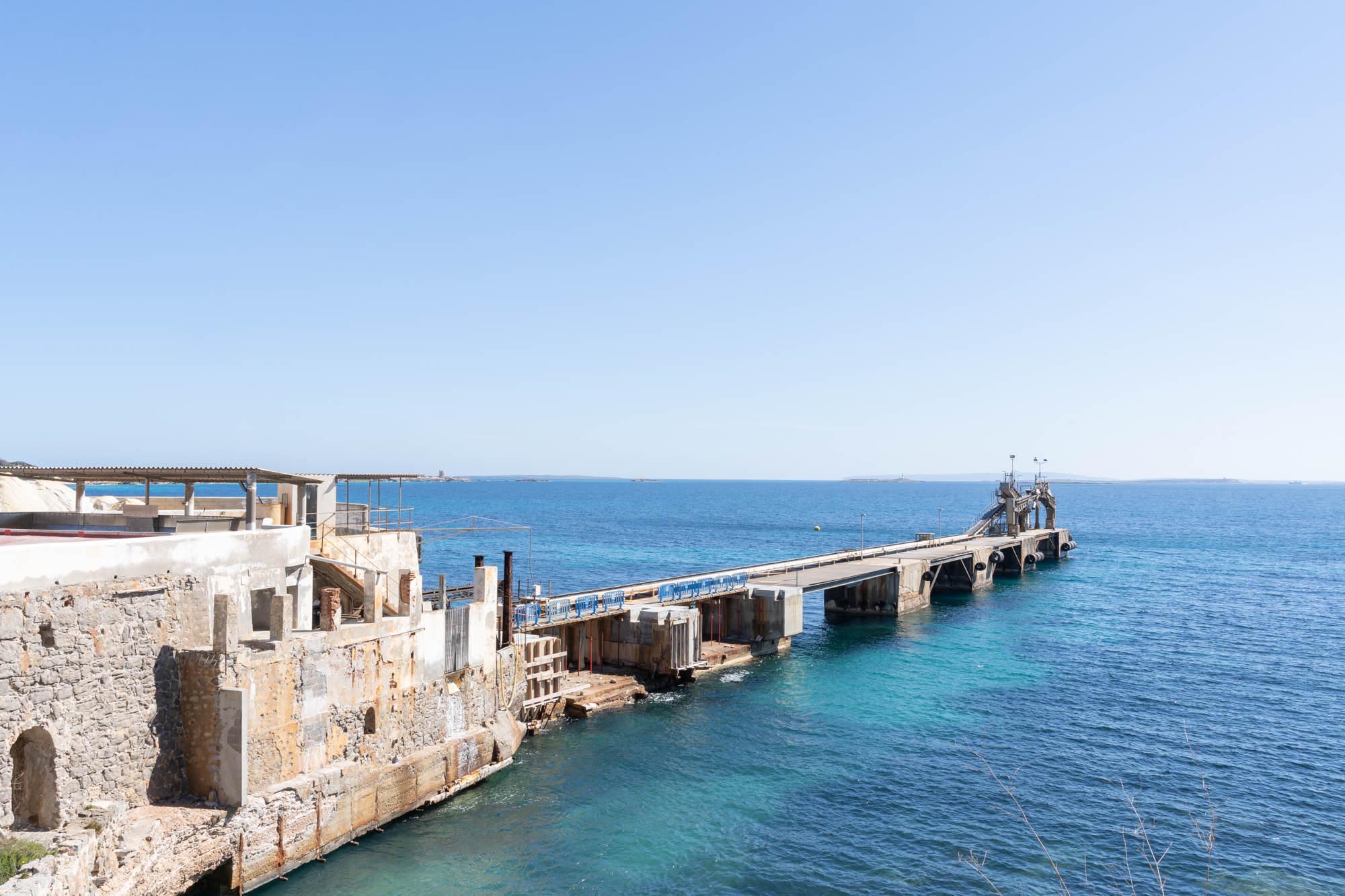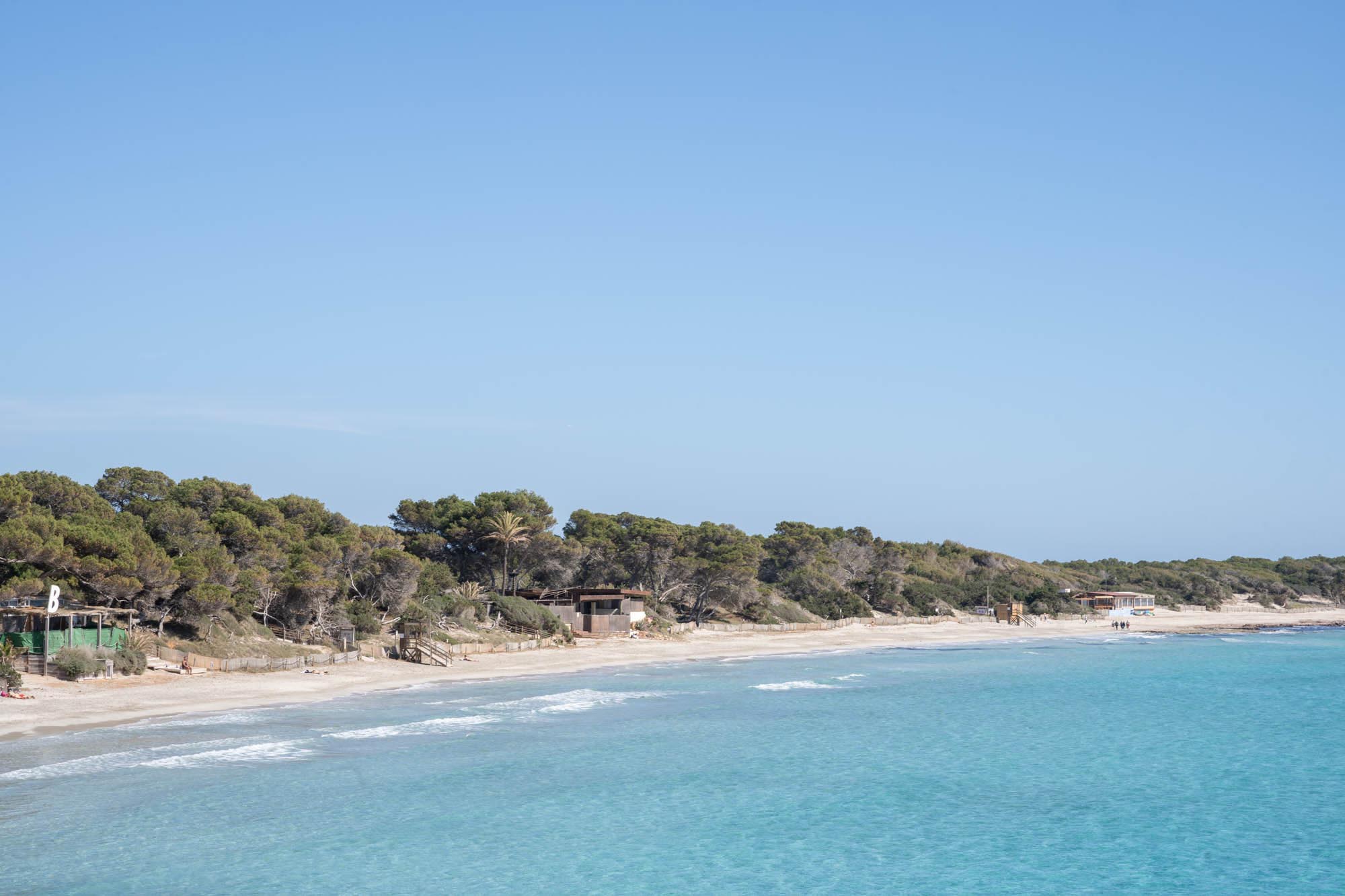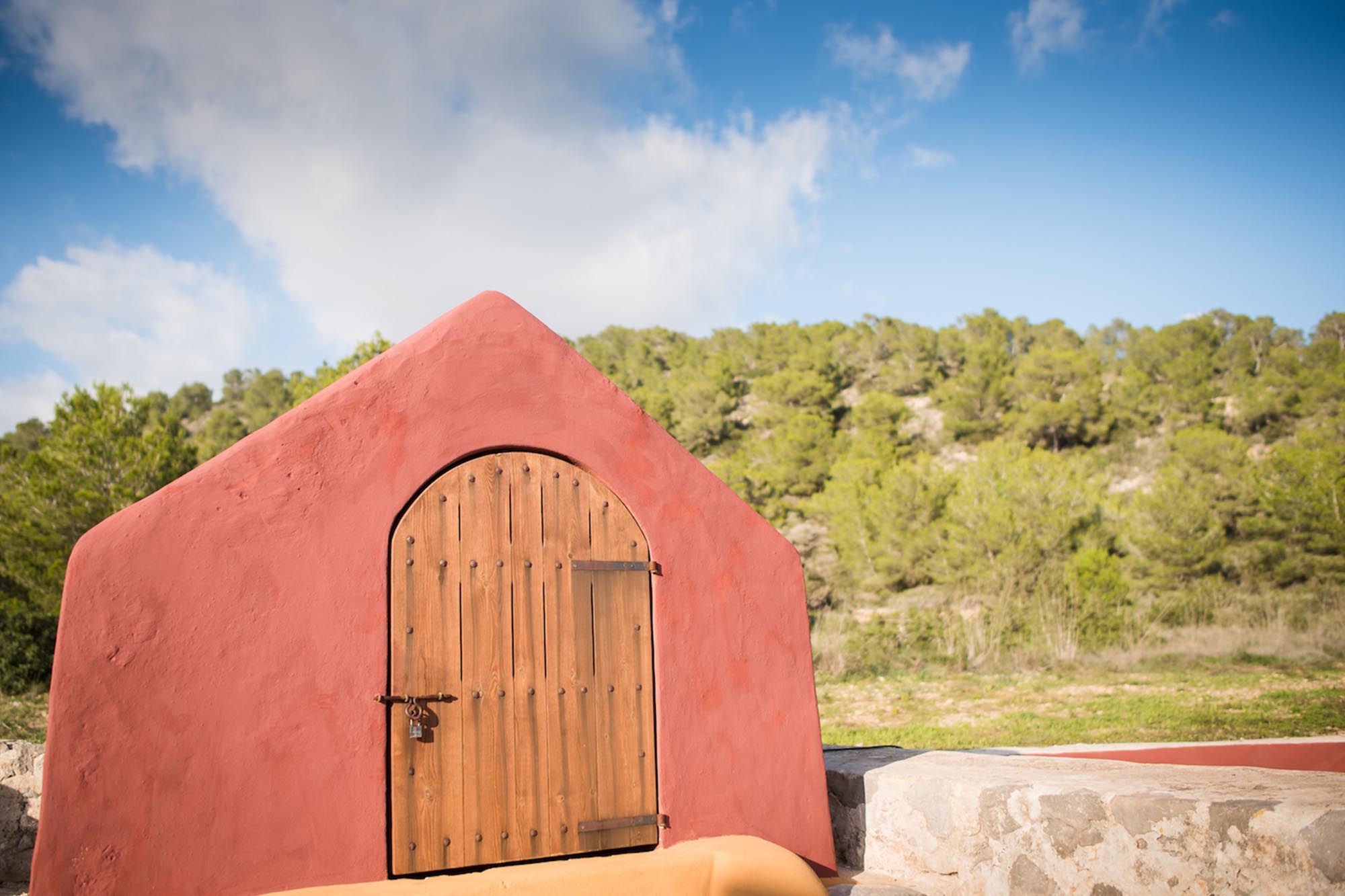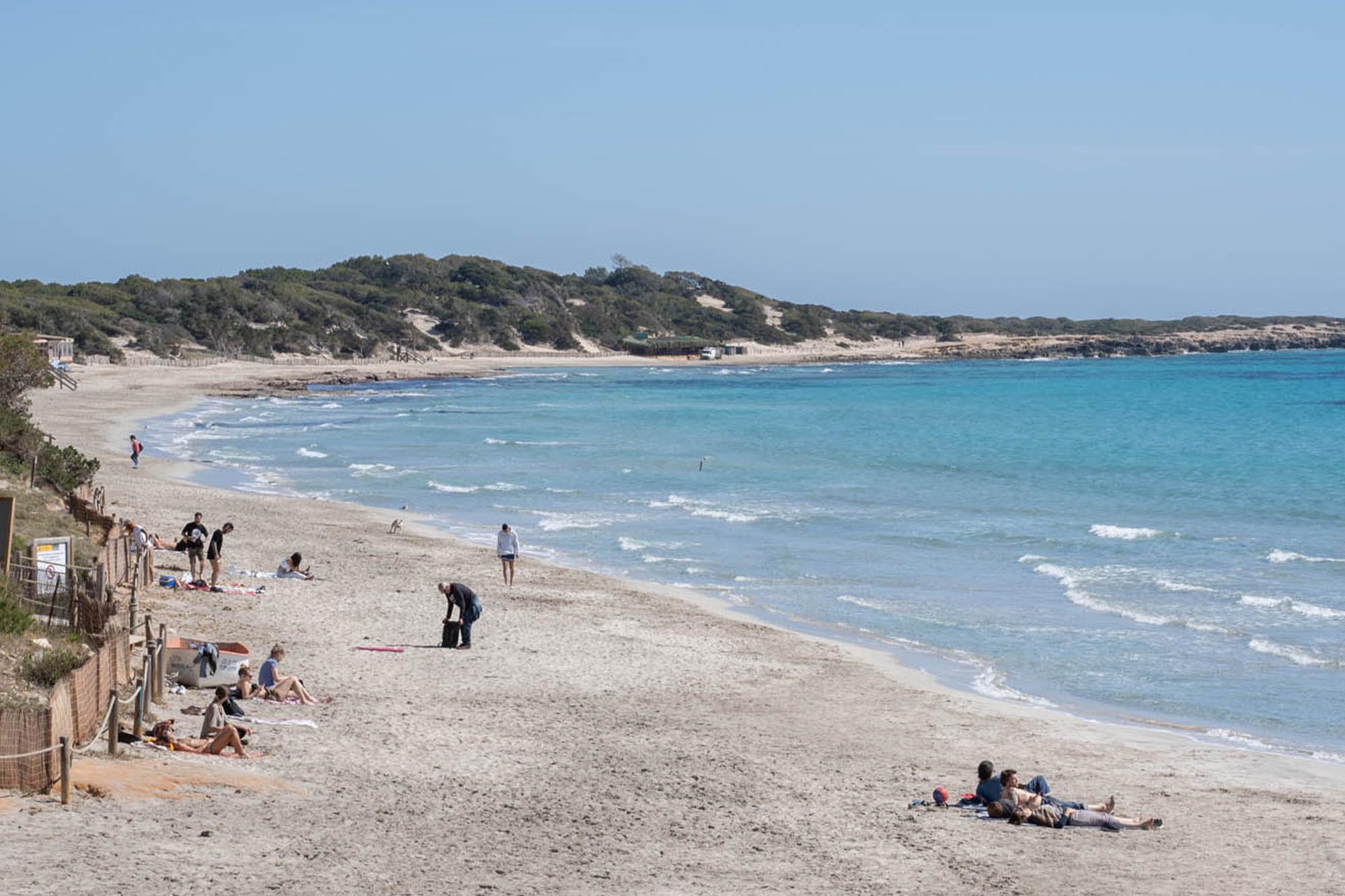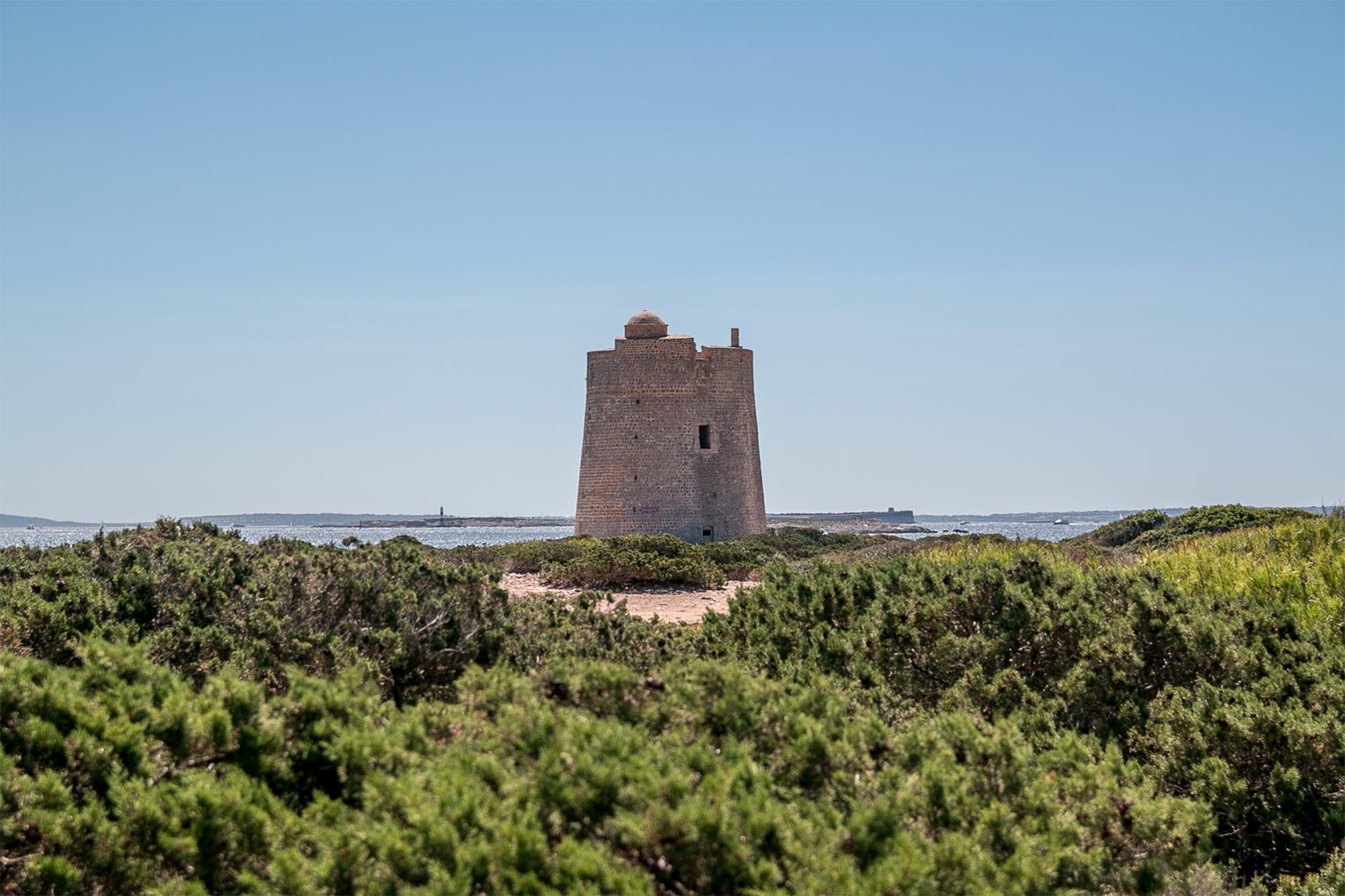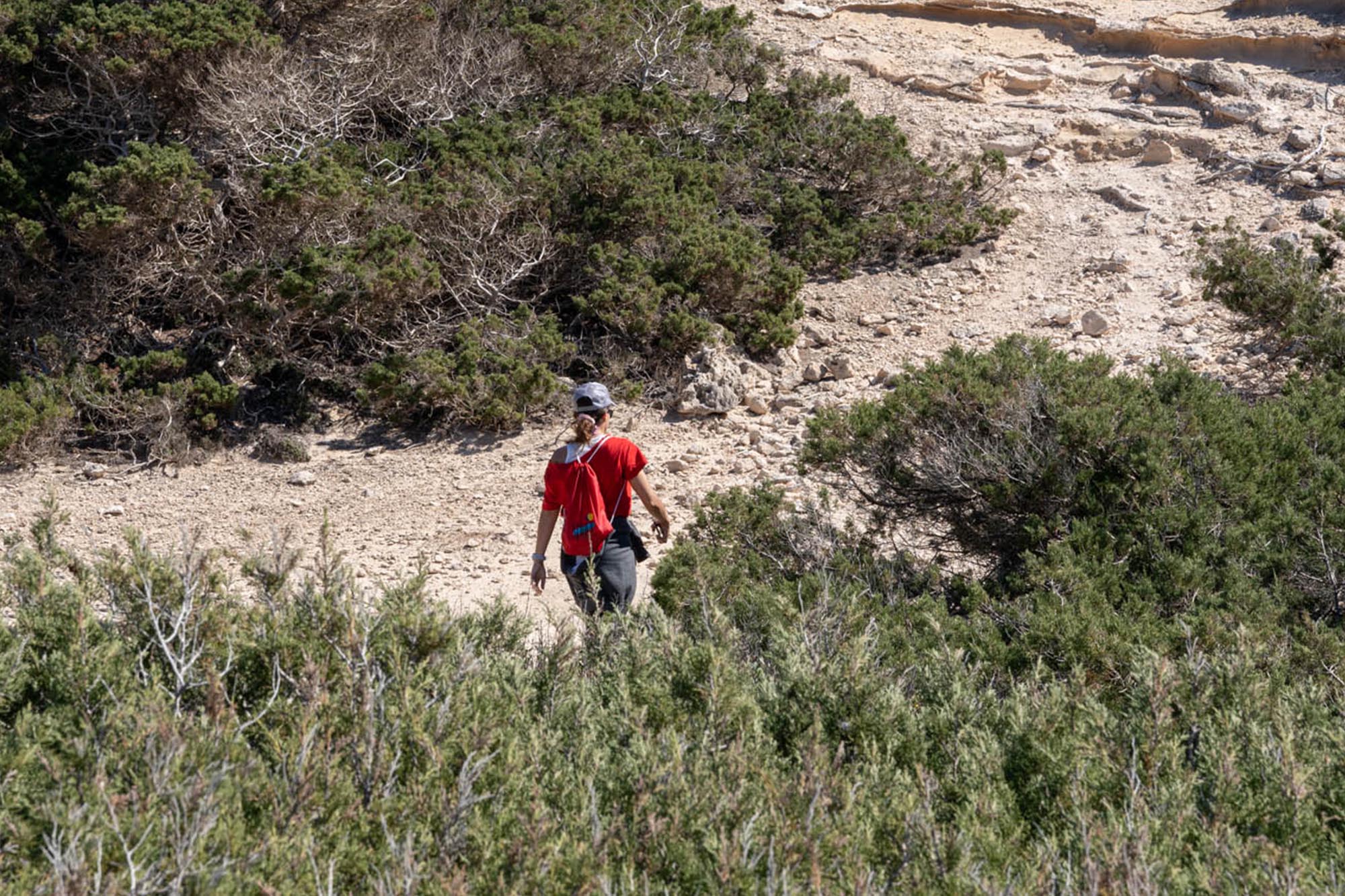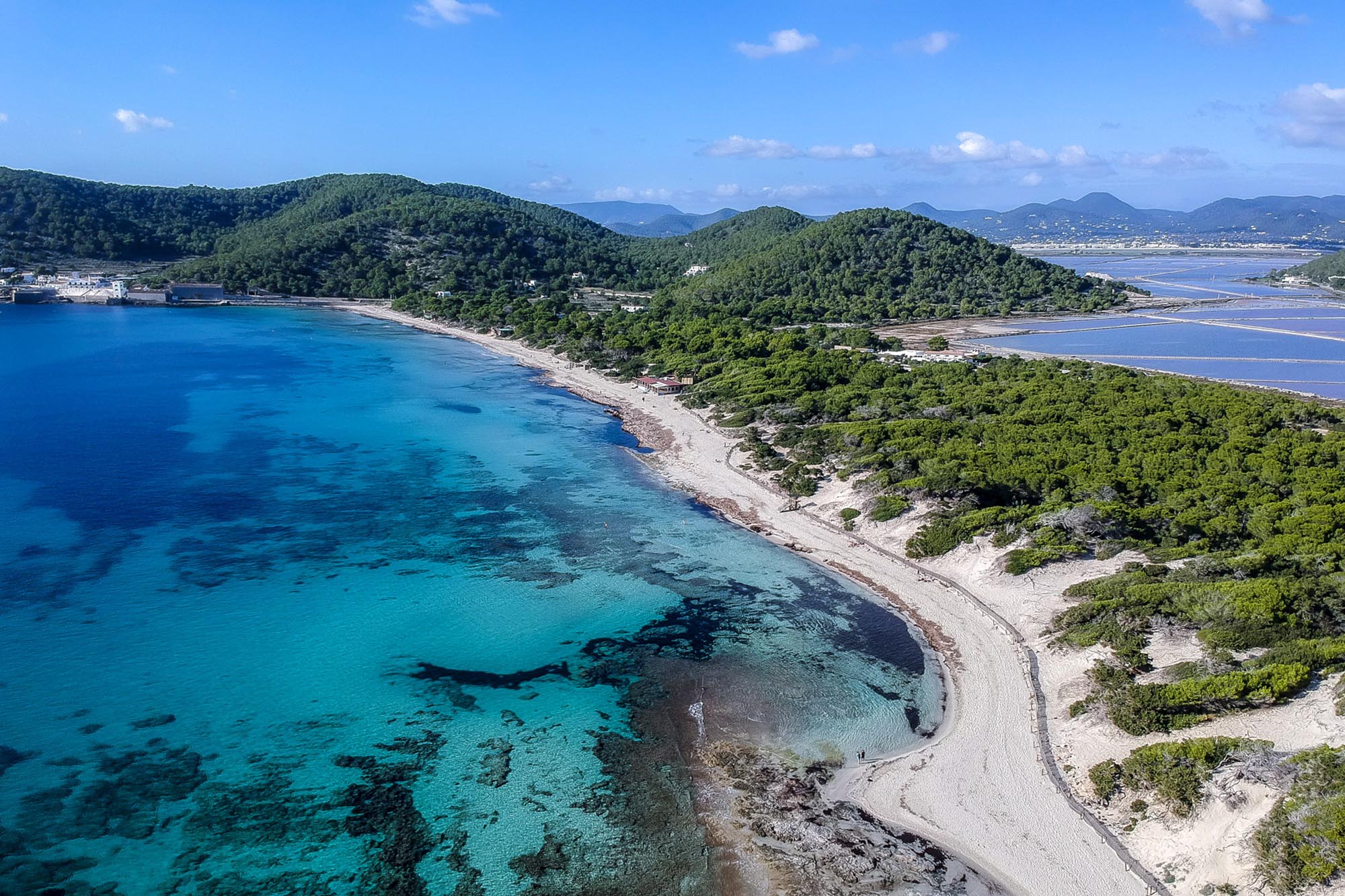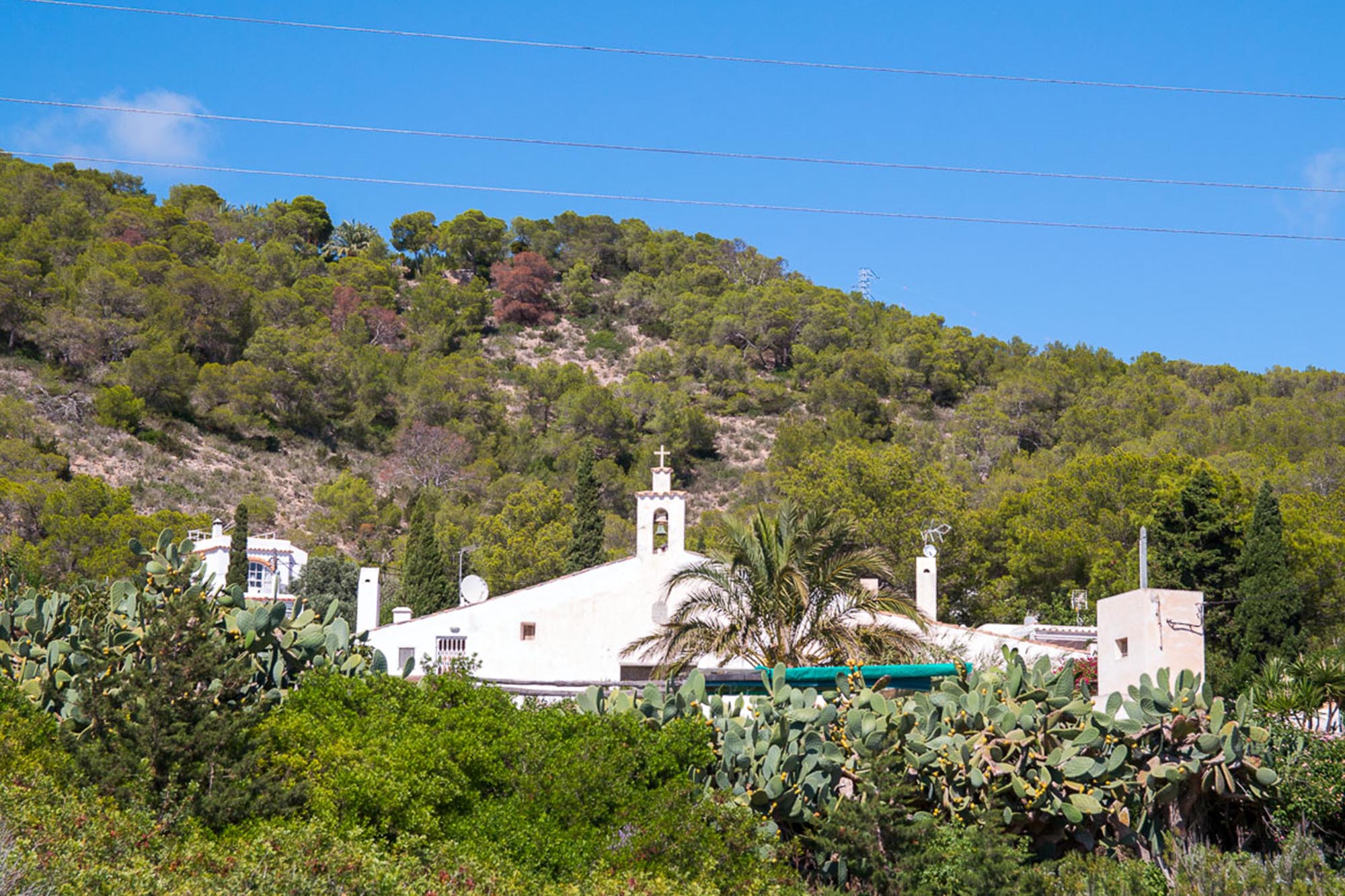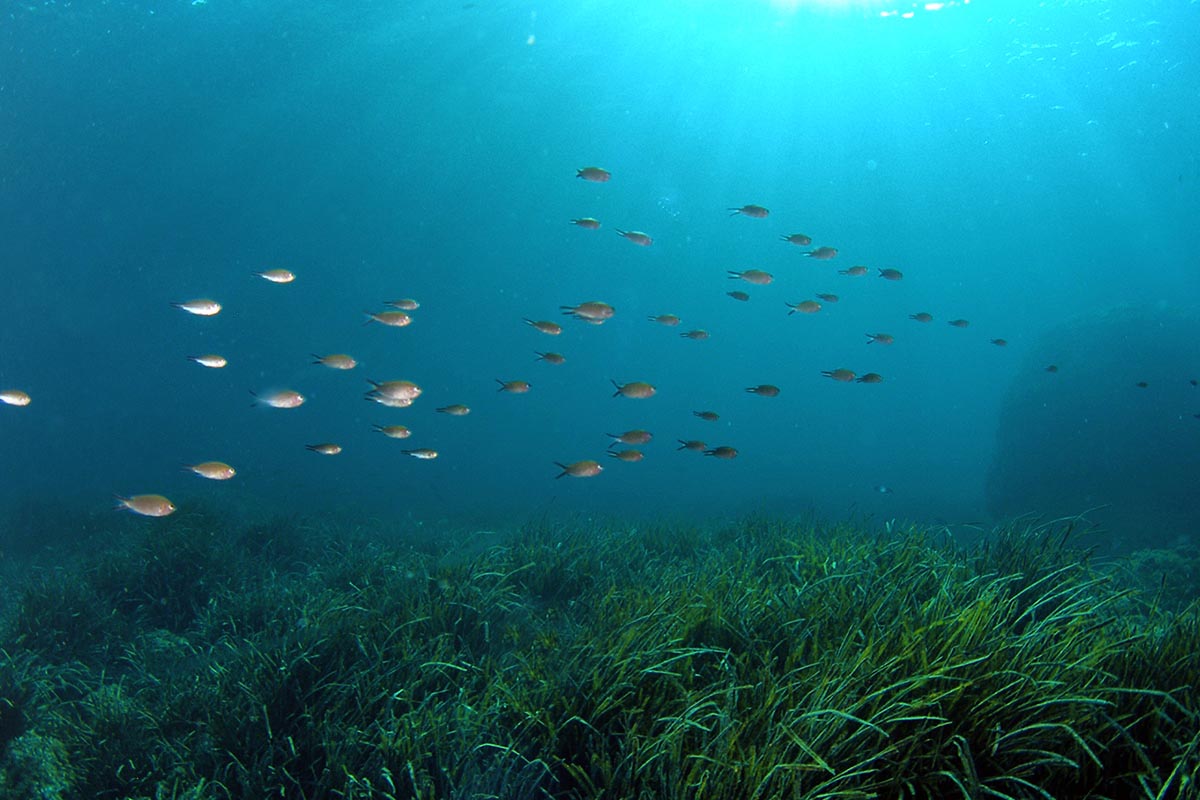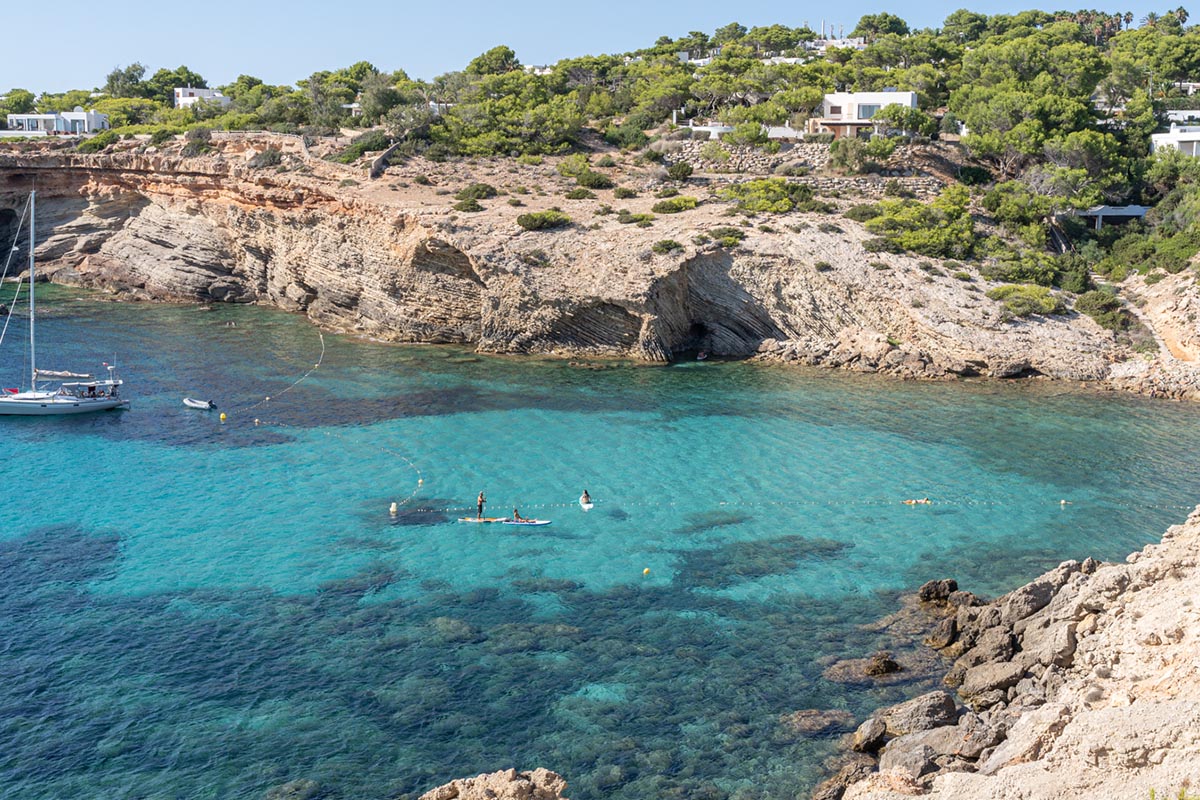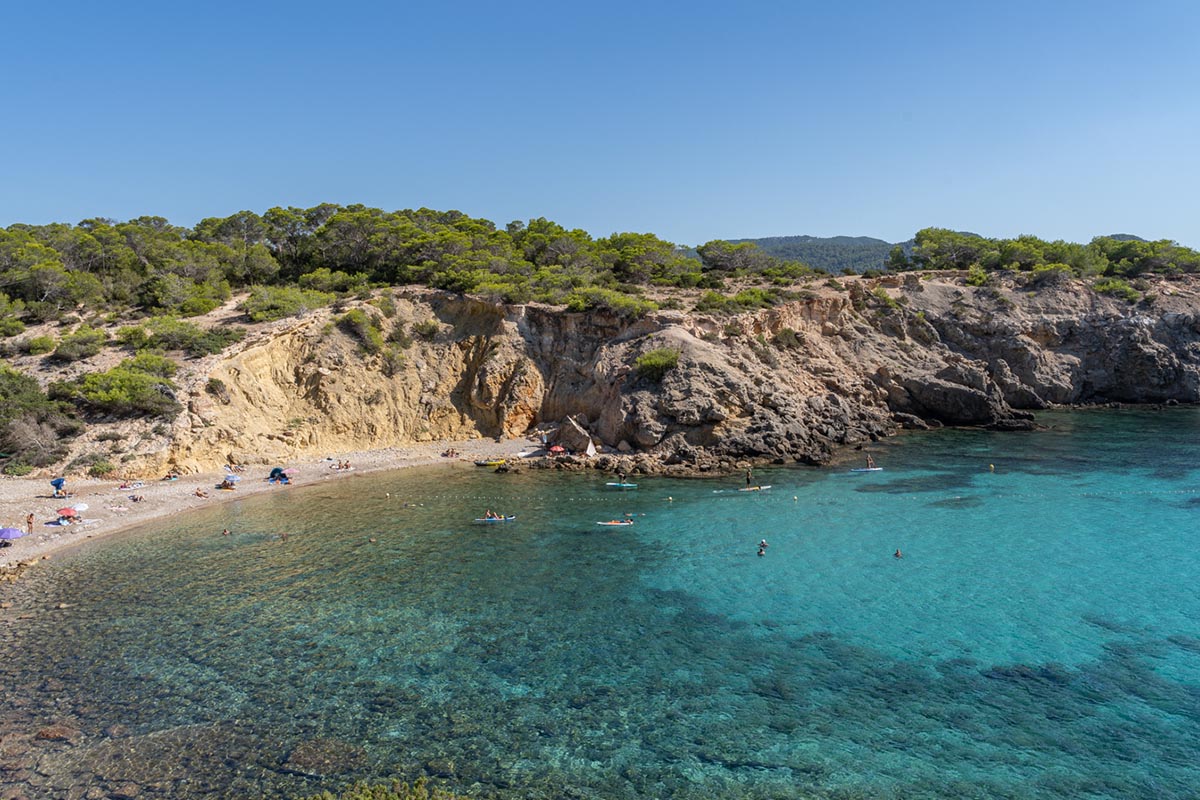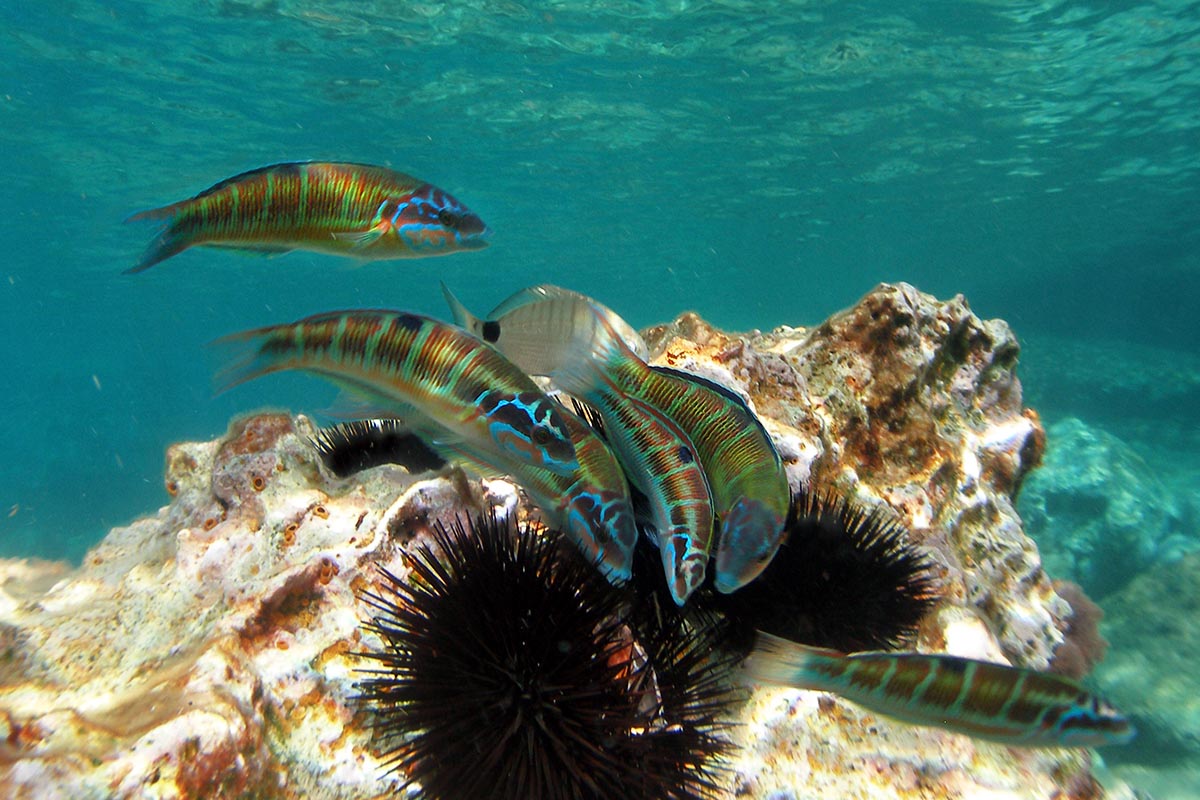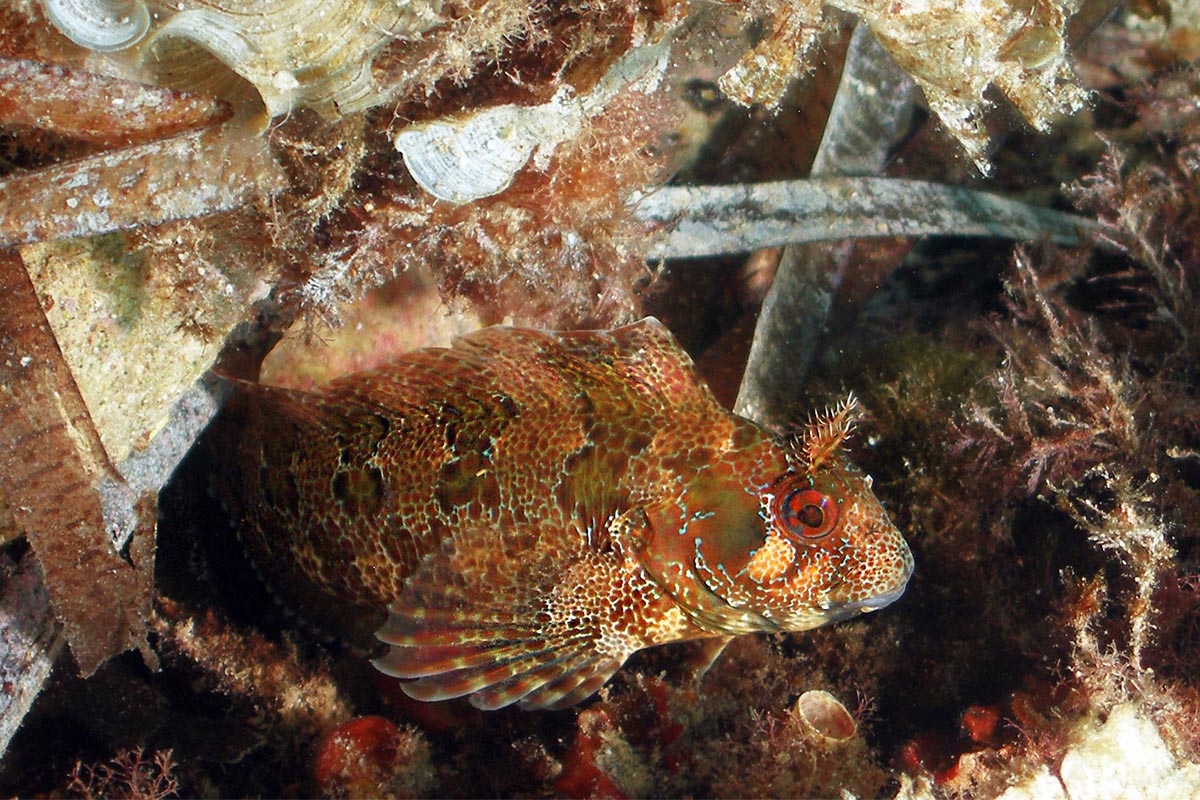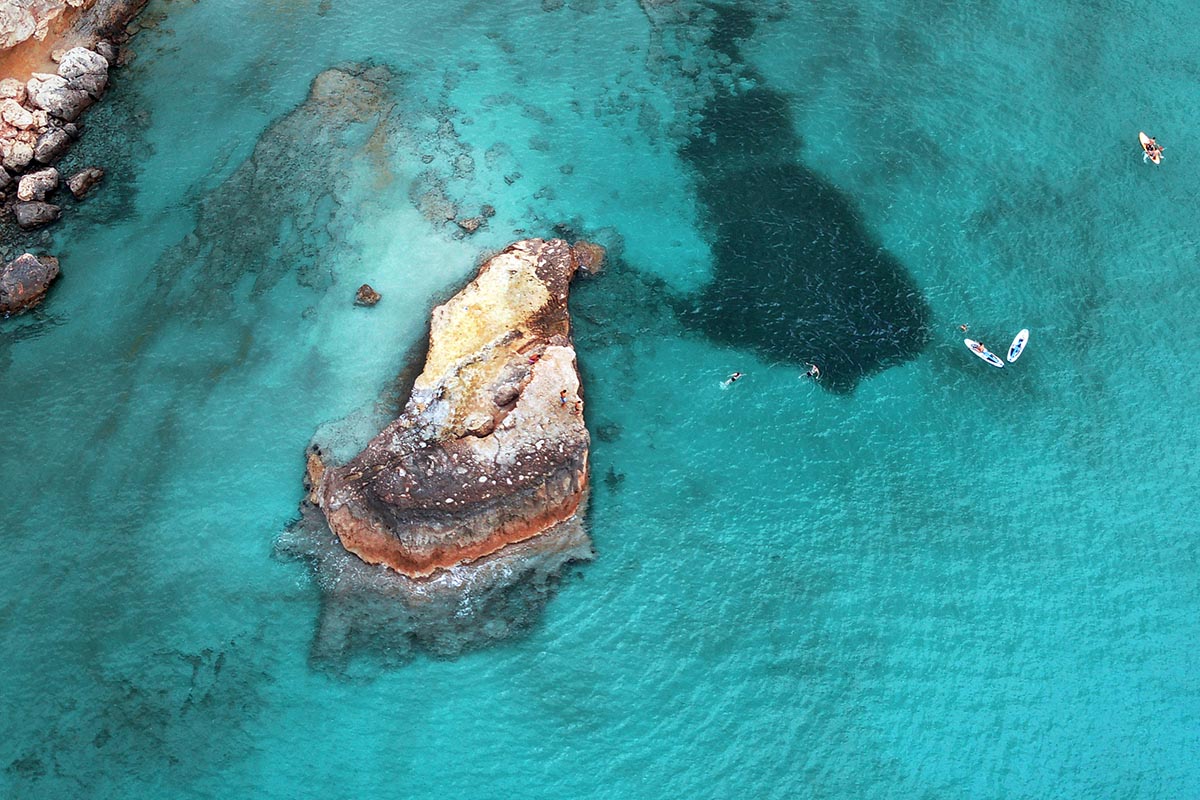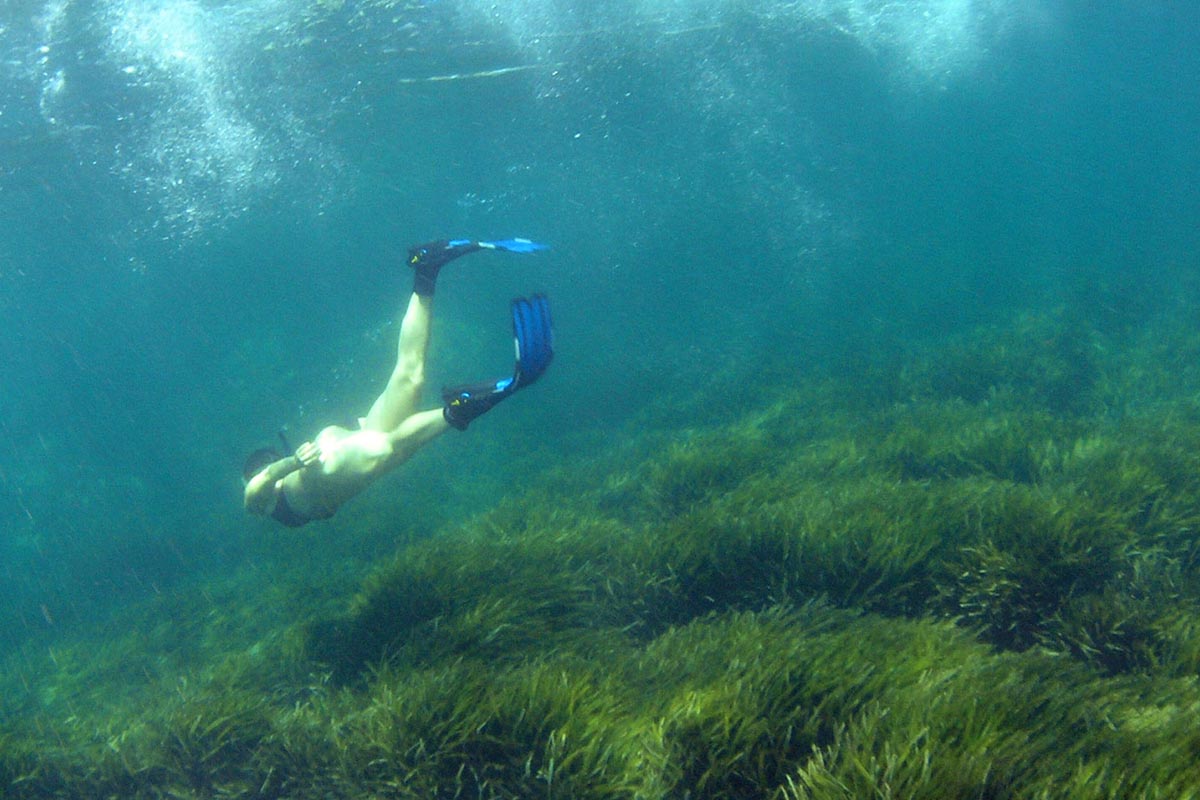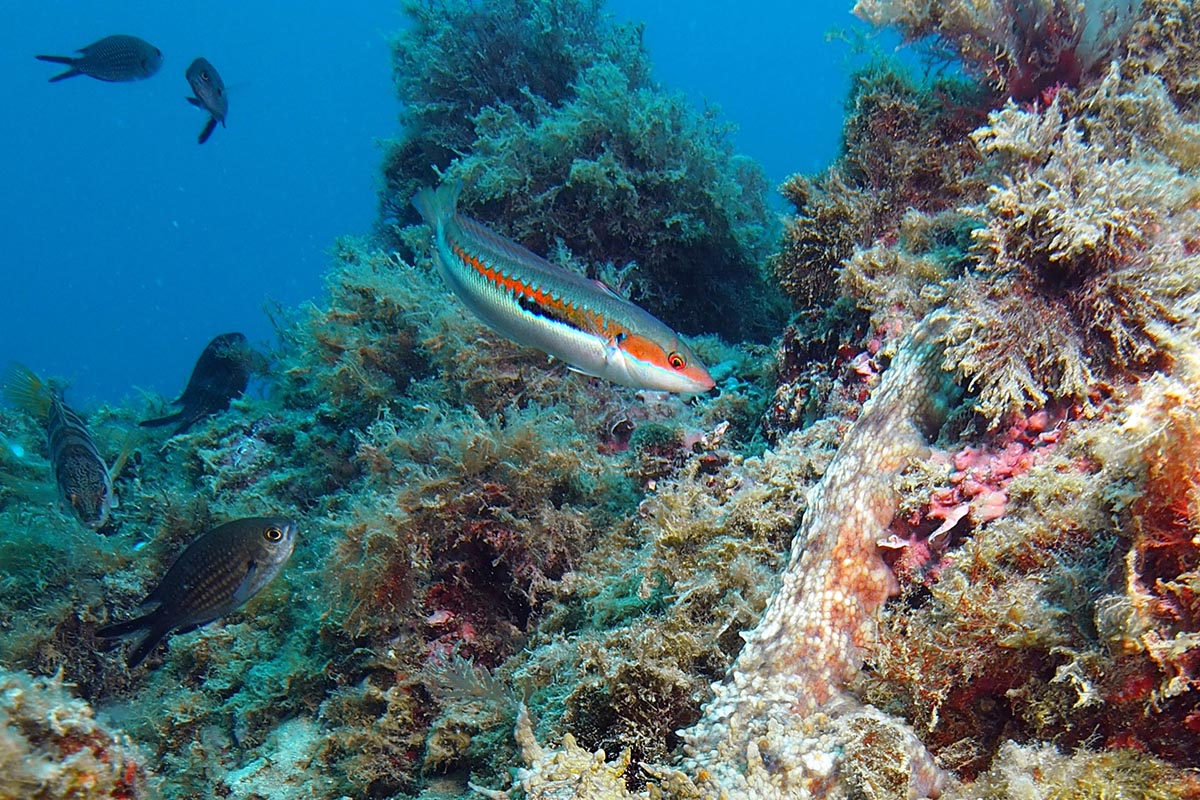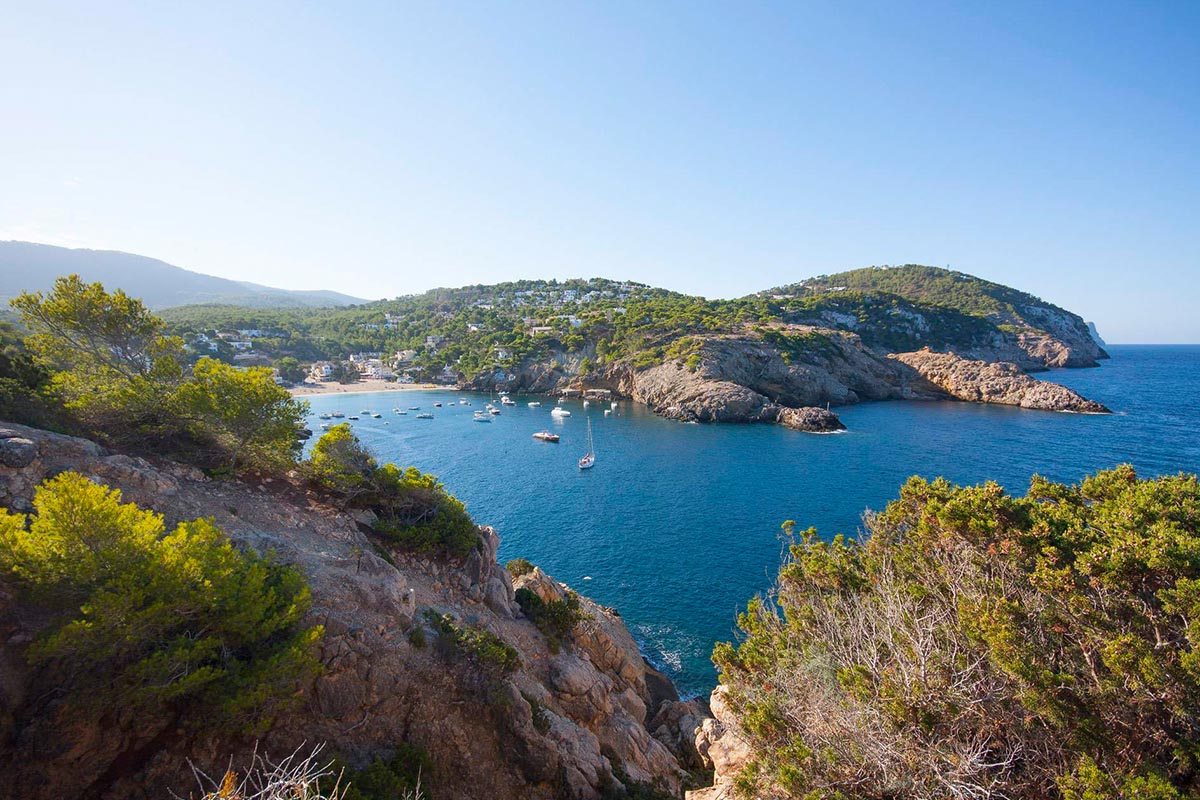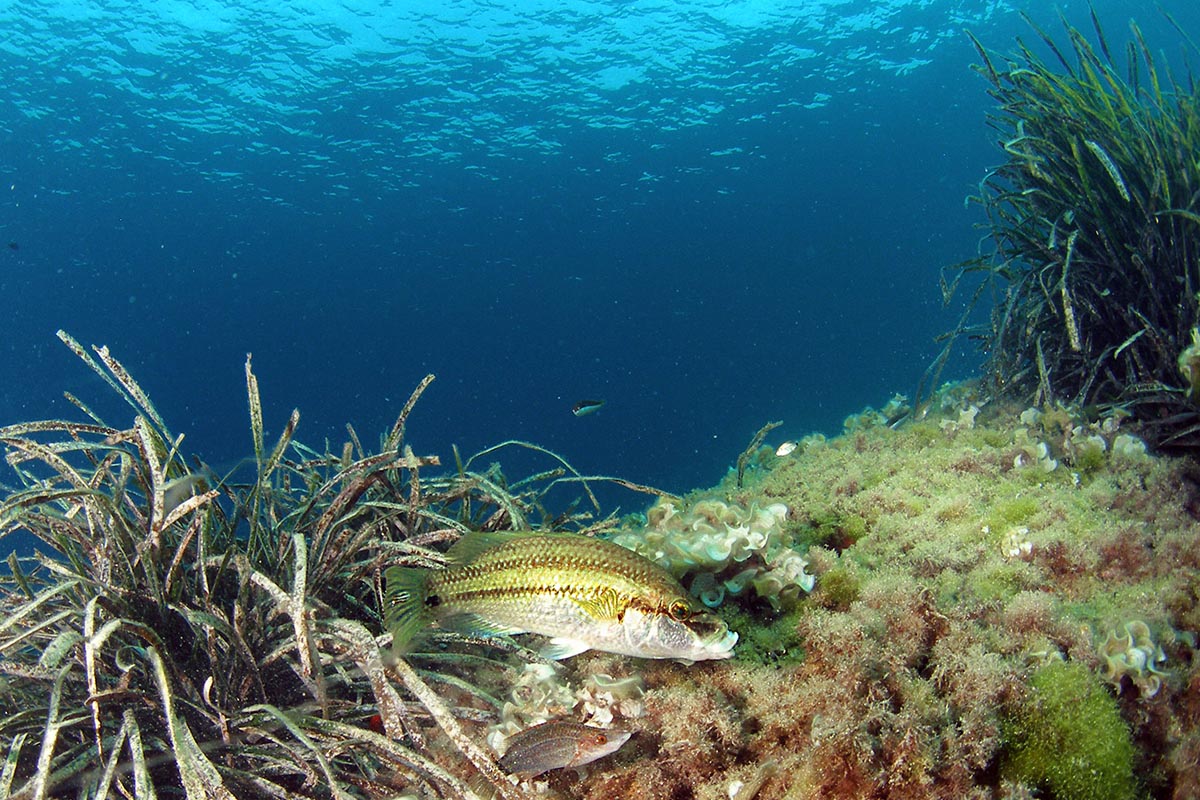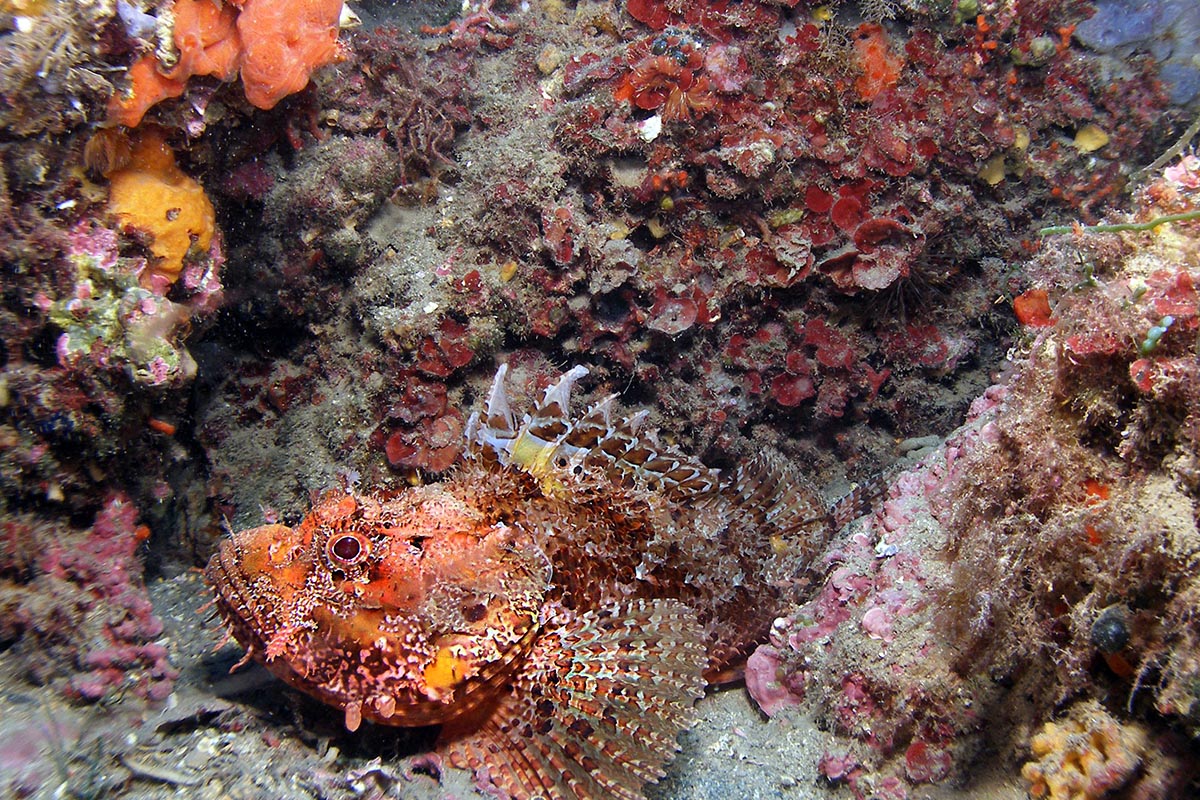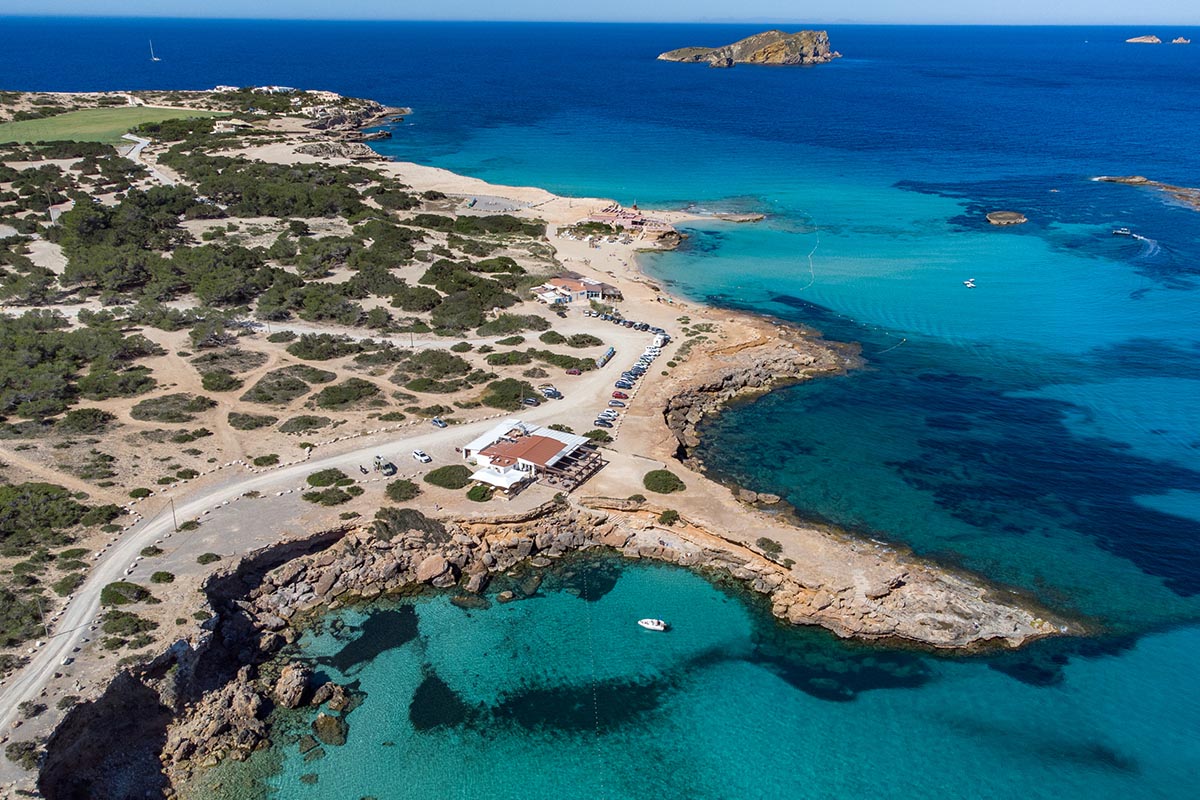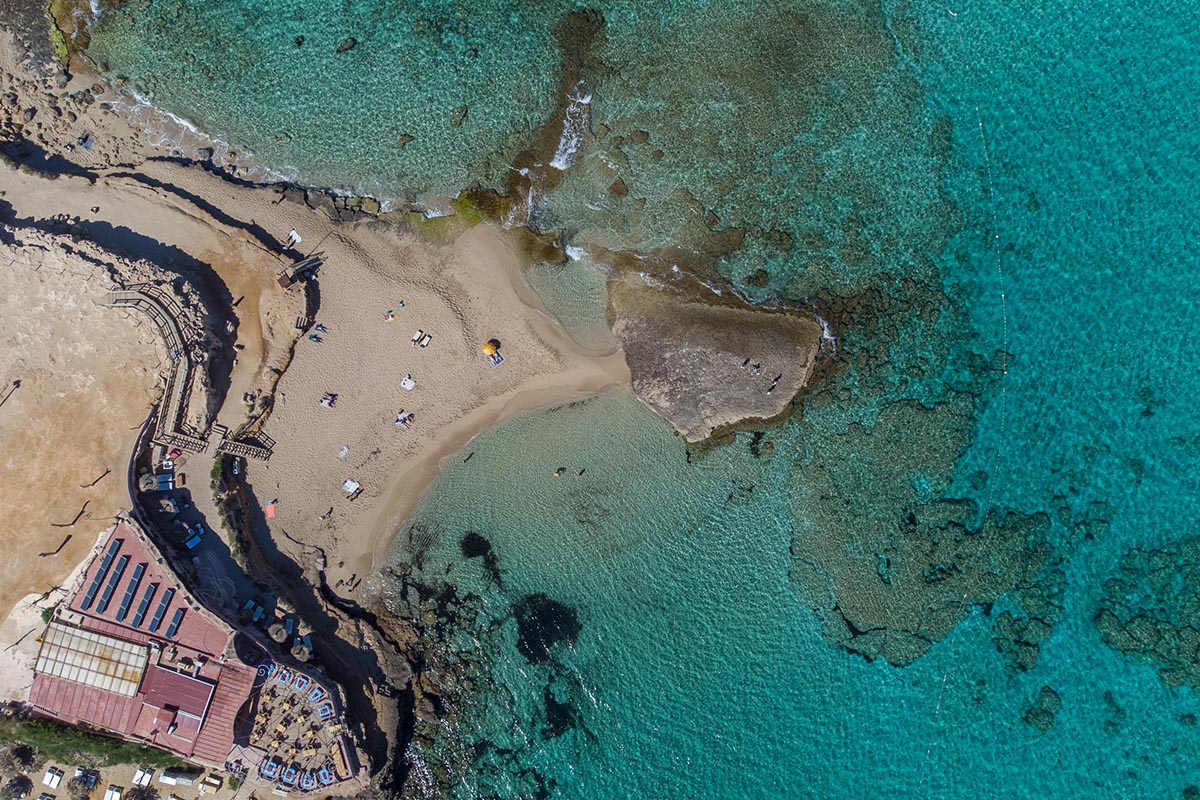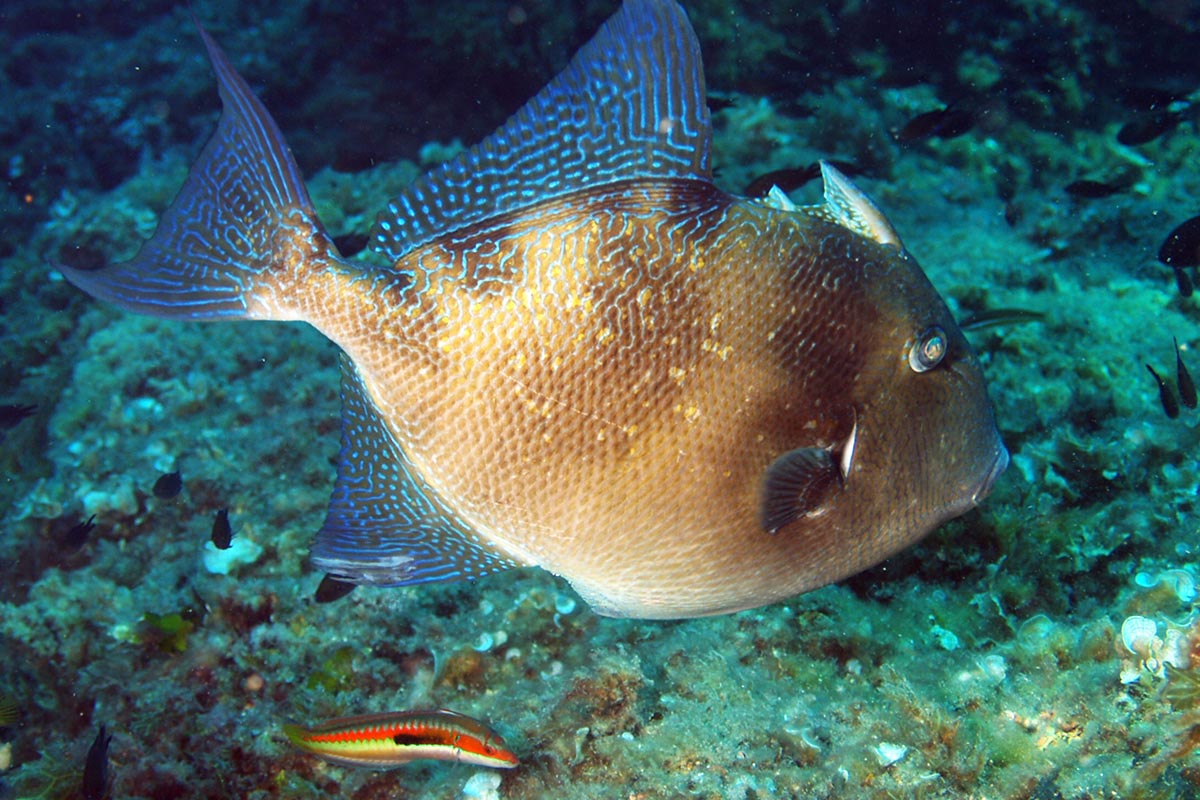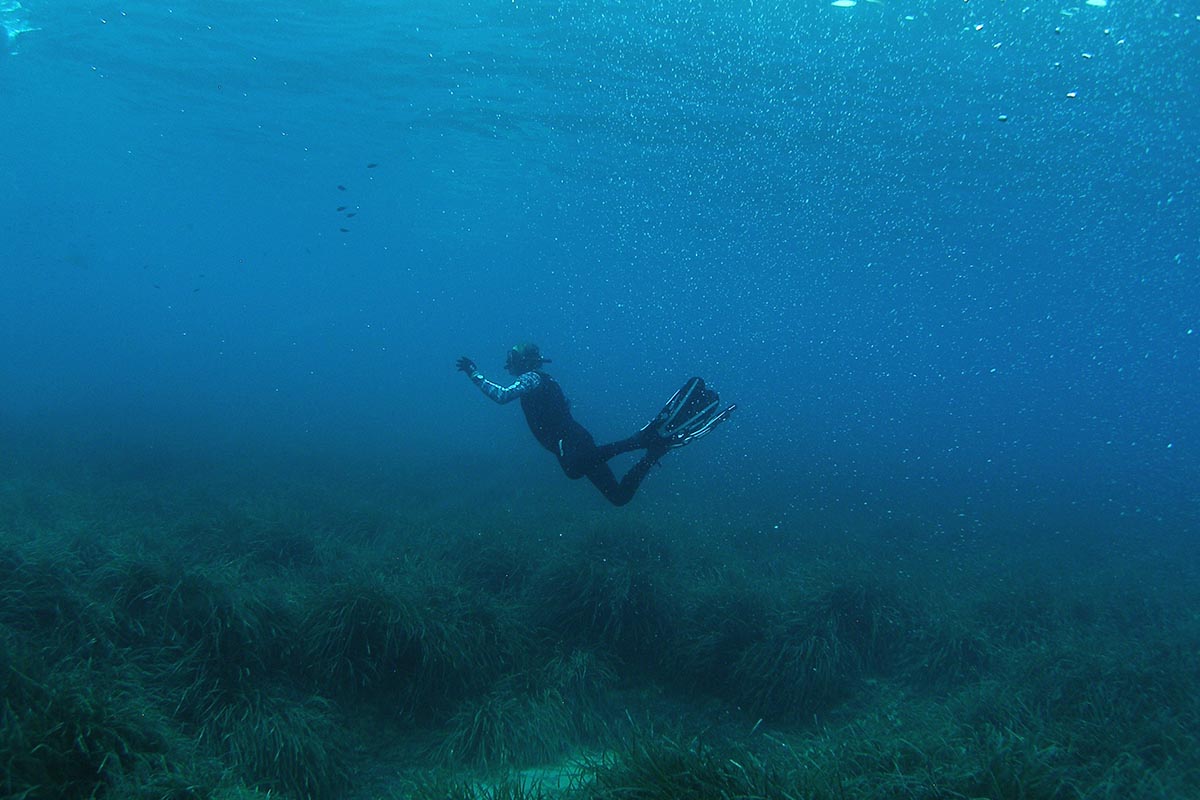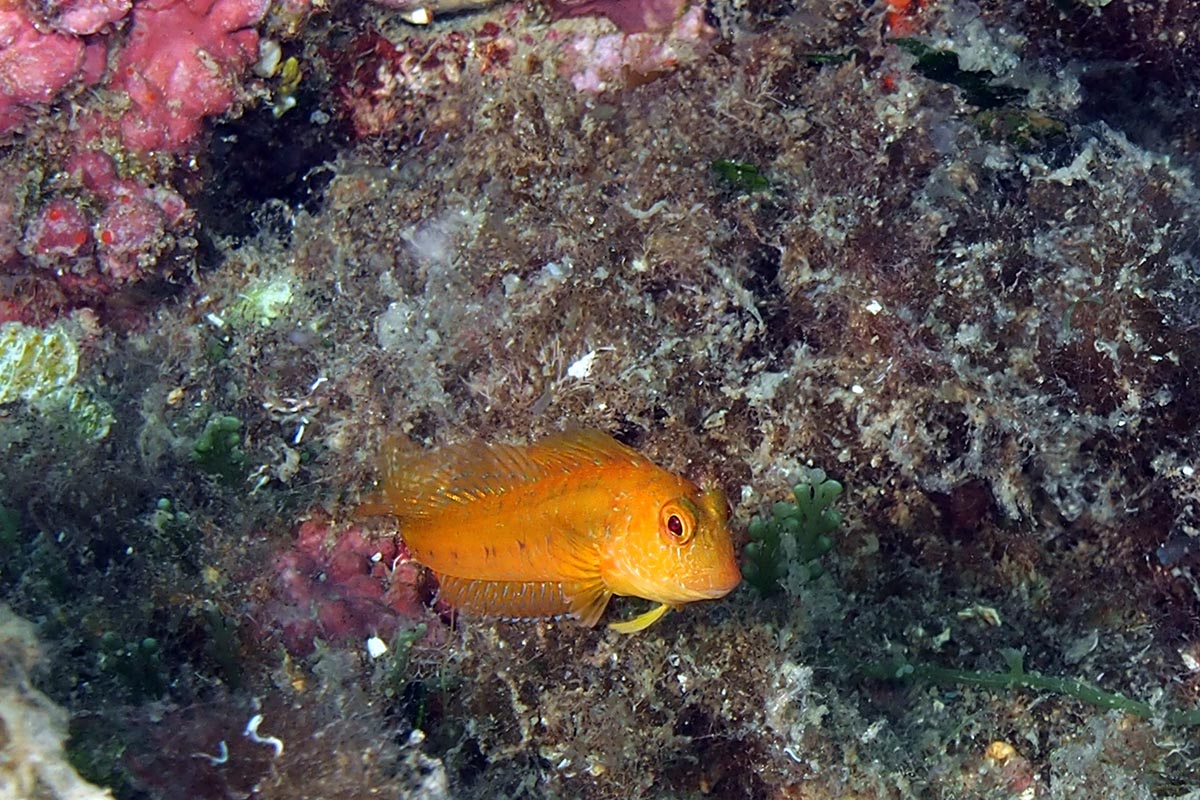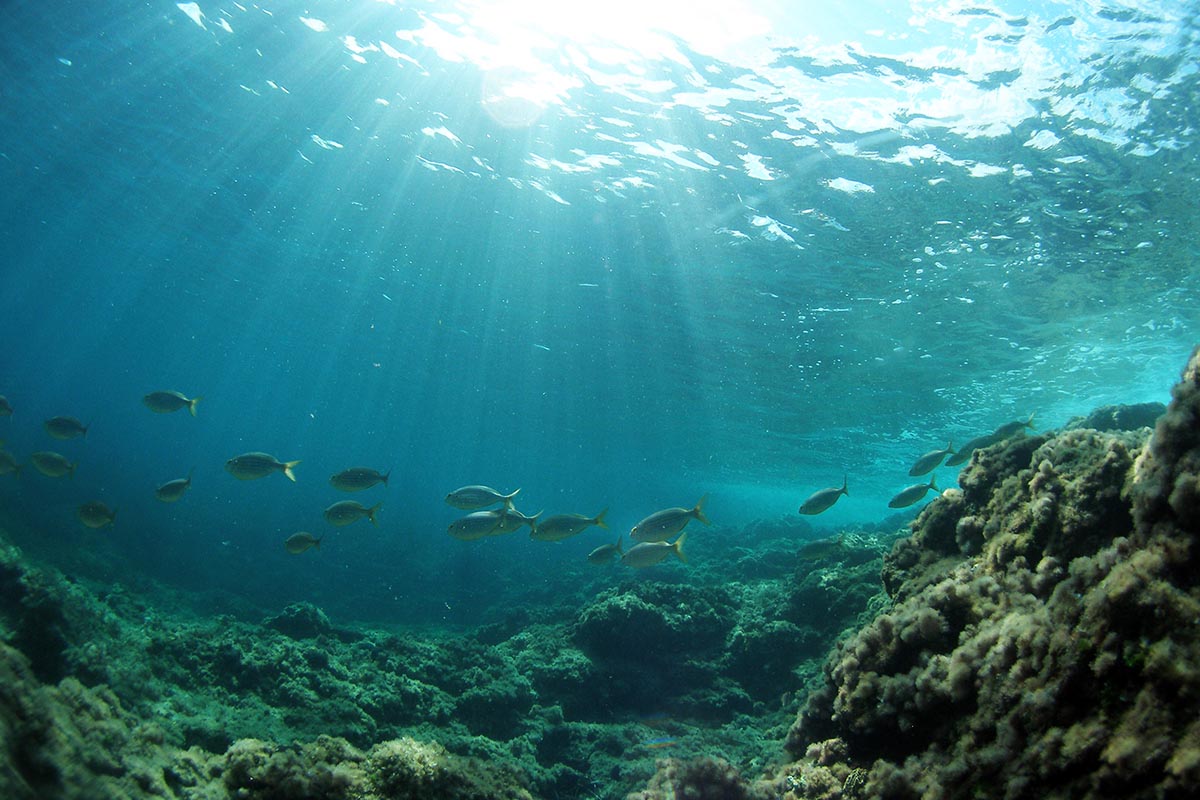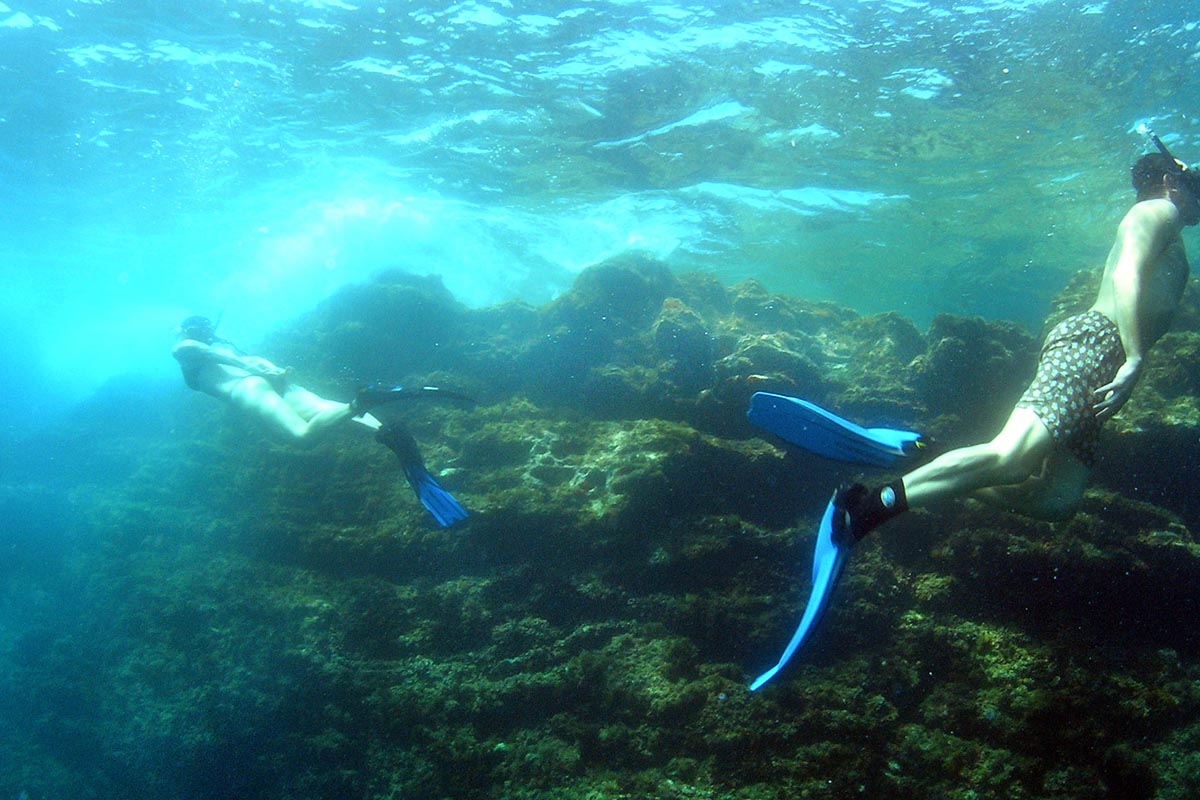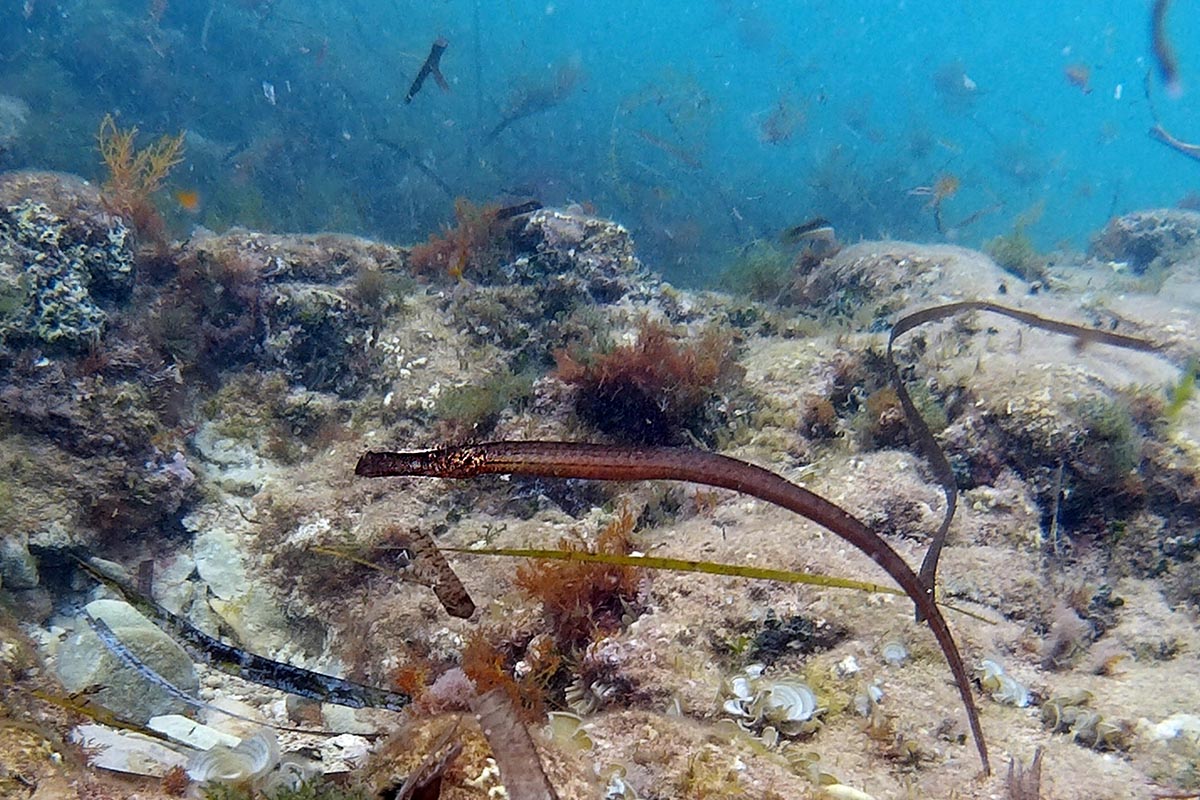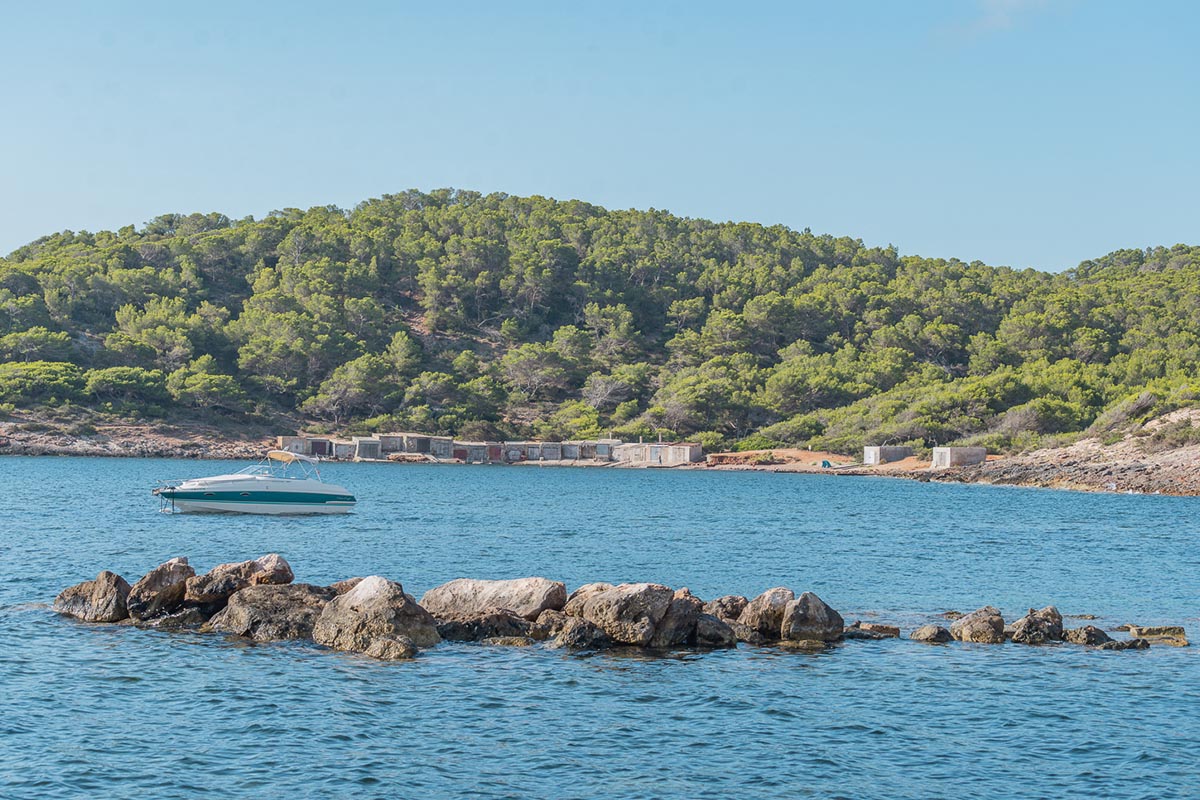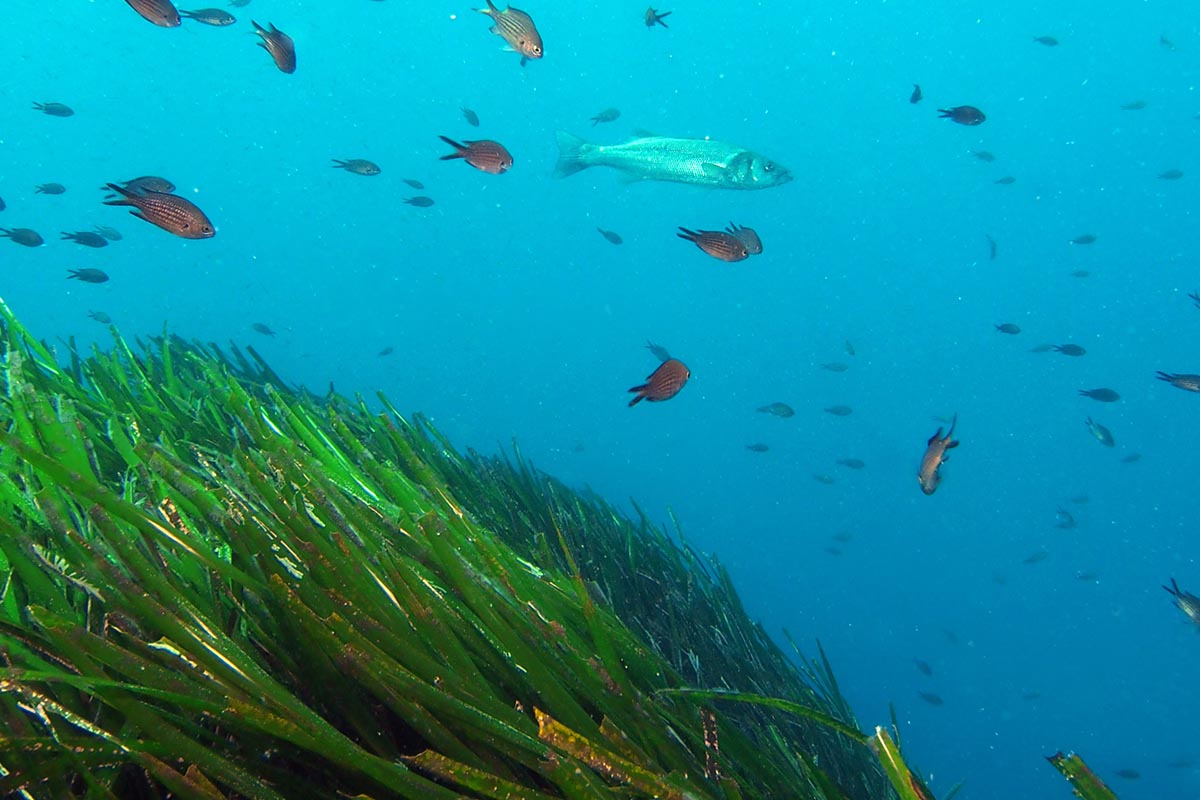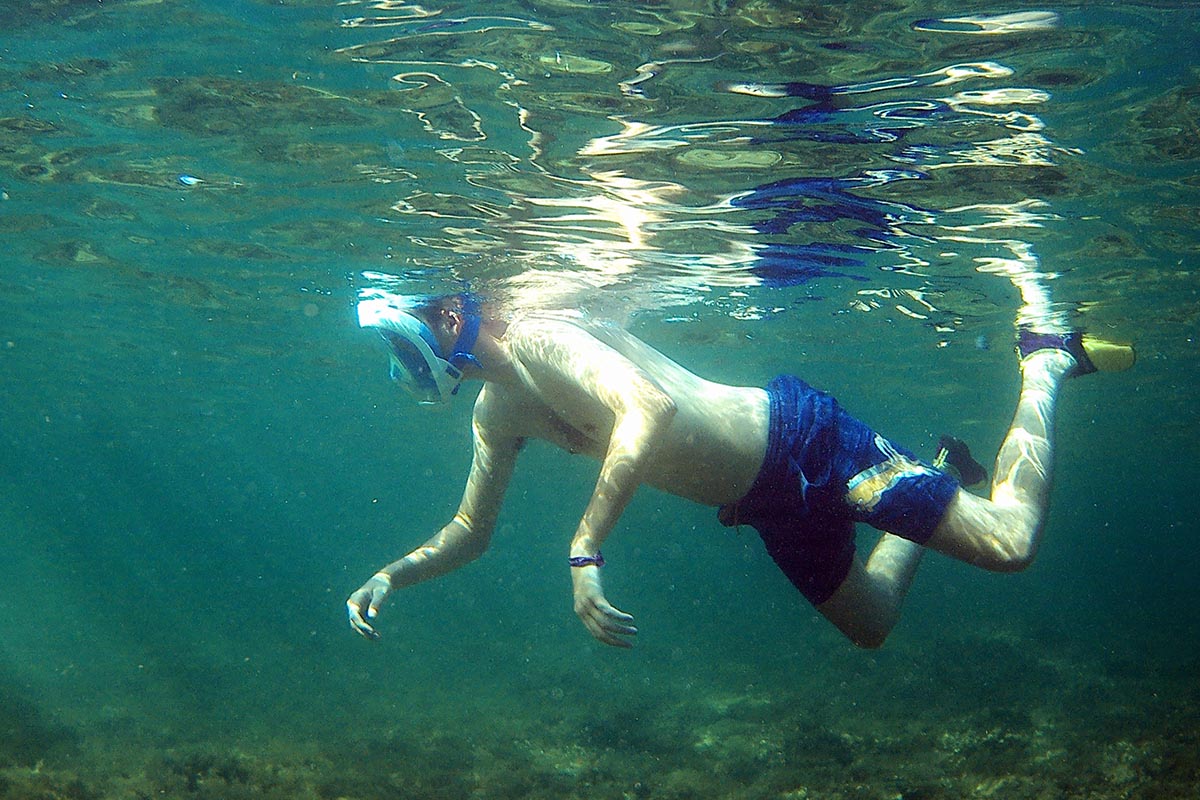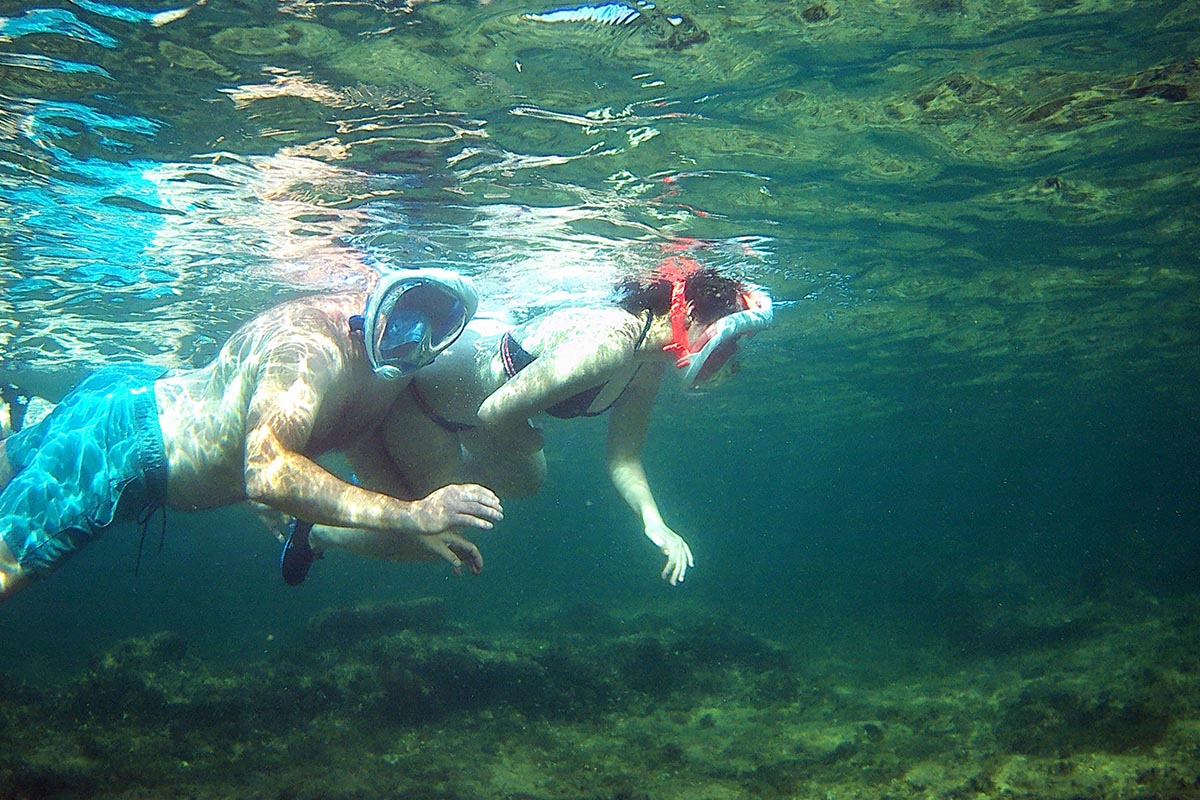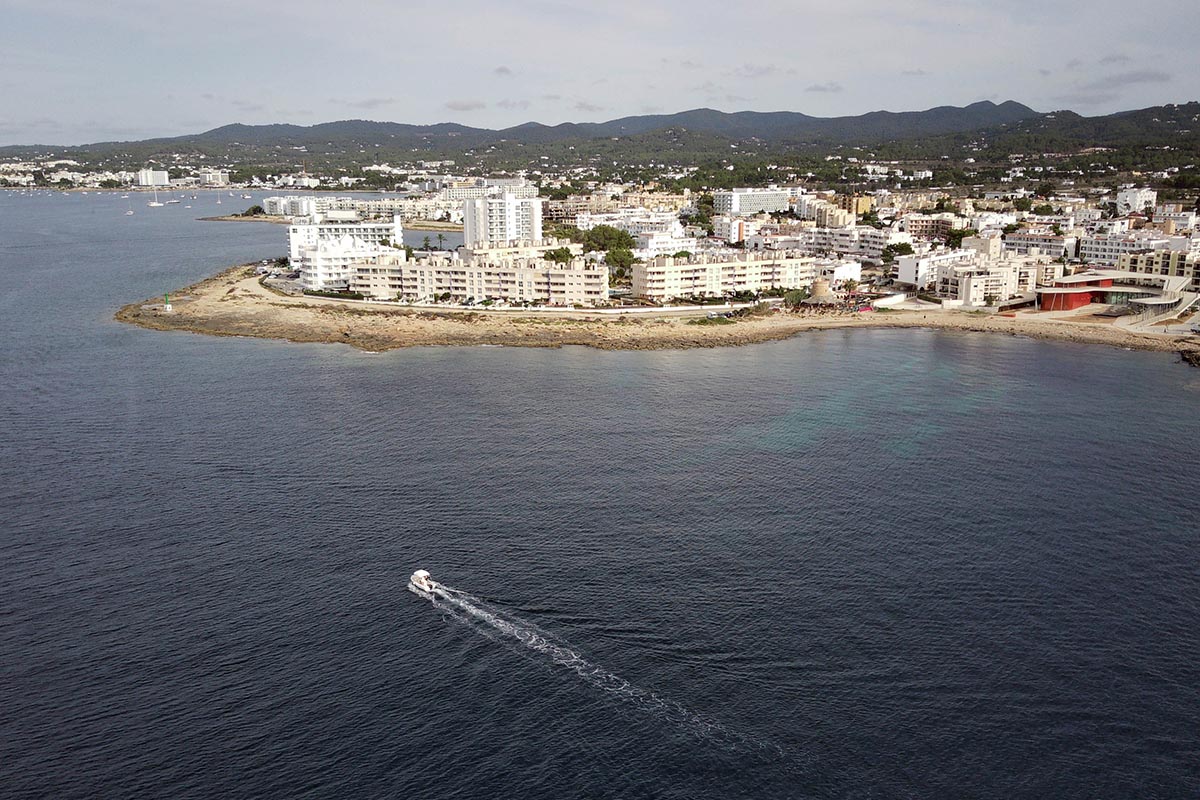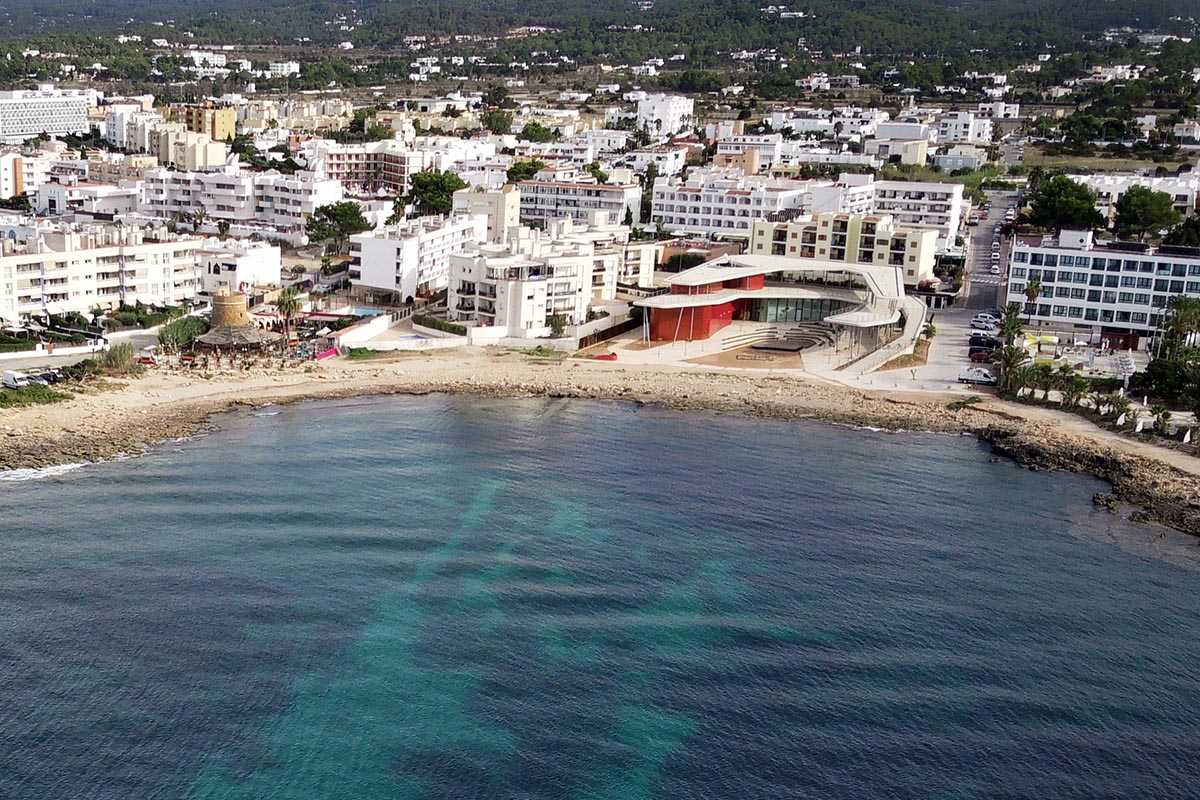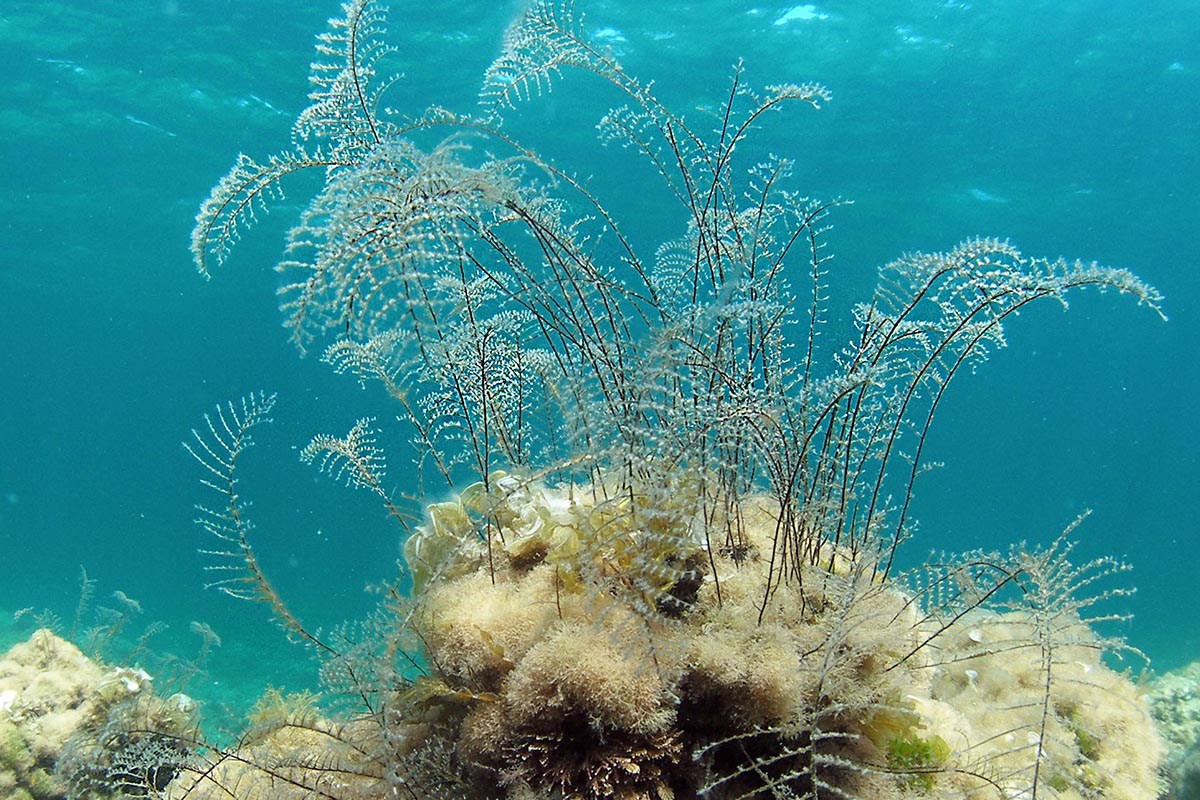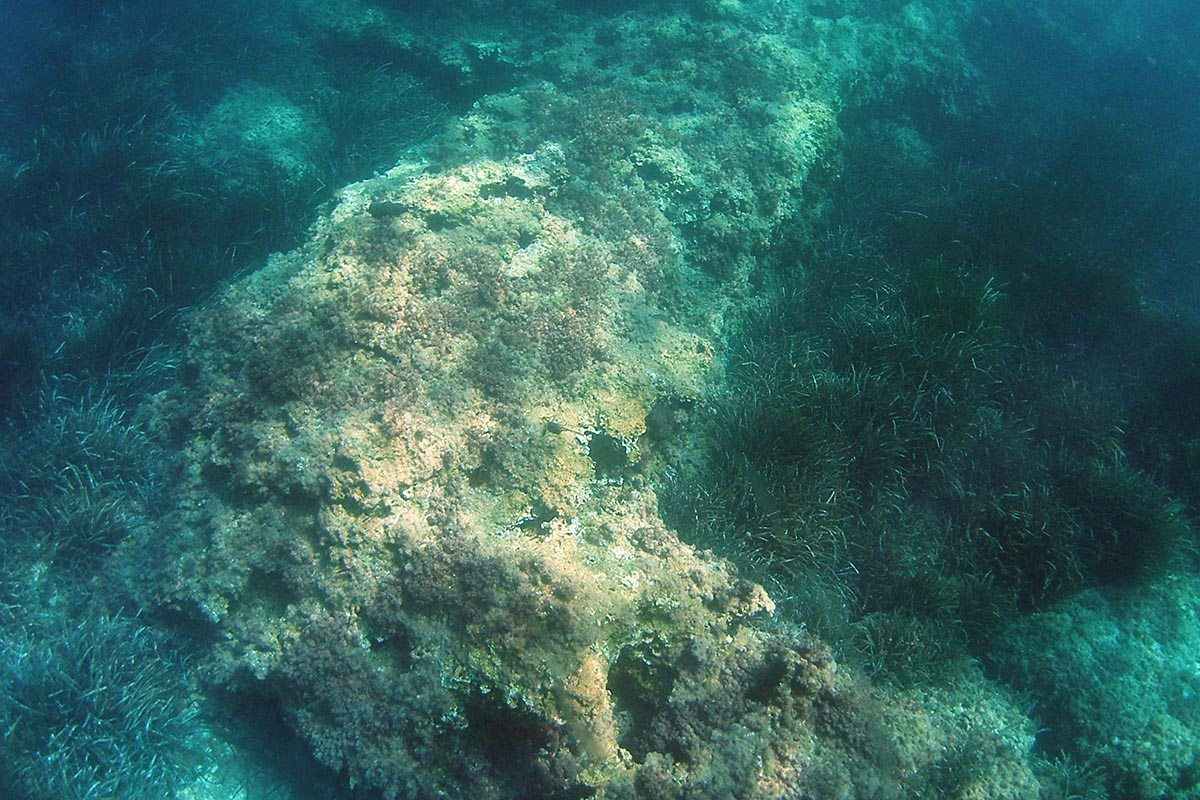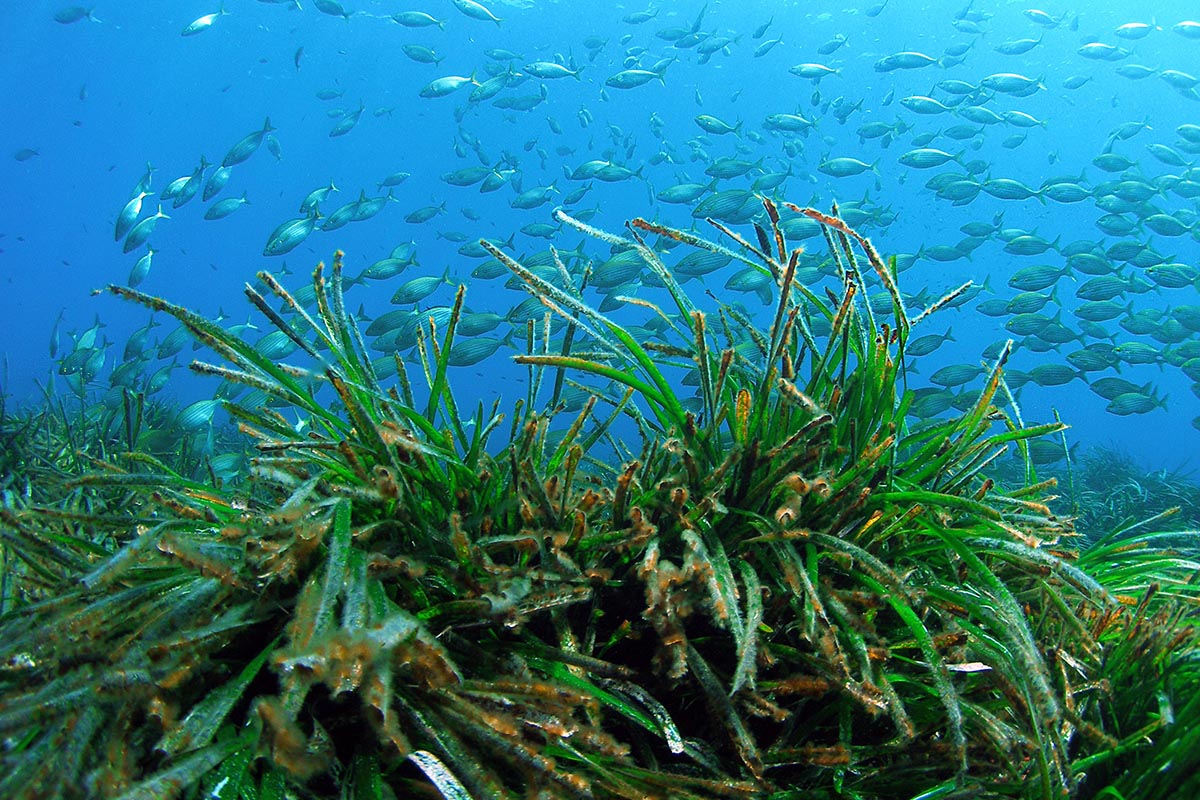Cala Llentrisca
Snorkel Routes
Cala Llentrisca is undoubtedly one of the most reserved coves in Ibiza, which can be reached after following a path along the mountain side surrounded by pine trees. This means that it is not an overcrowded area, as not many people dare to go for a walk that is, on the other hand, enchanting; and those who do, choose to spend a good part of the day there. We will find a picturesque setting of the purest Ibizan Mediterranean, with pine trees overlooking the sea and the old huts for the fishermen’s llauts, surrounded by tranquility and silence.
The water here is crystal clear and particularly suitable for a relaxing snorkel trip. A place like this allows for several routes, although as we are going in good time, we will take a circular route that will take us along the right-hand side following the wall that ends at the point, although it is not necessary to reach it, and then cross the cove and reach the other end, which we will recognize close to the coastline. In any case, you already know that these routes are merely suggestions and that we can change them at any time and adapt them to our liking.
The seabed is very shallow if we are close to the wall and, in many sections, we can stand upright without any problem. The rock dominates the substratum and there is a profusion of hollows where the most varied marine life finds refuge and where we can see rainbow wrasse and axillary wrasse, all colorful fish that are constantly coming and going.
Recommendations
There are two possible paths to reach the cove, although the most recommendable is the one that leaves from Cubells following a road that then becomes a path that crosses a housing estate at the end of which we leave the car and begin the route on foot.
The cove is completely natural, so there are no services for users.
If we move away from the wall we will see medium-sized rocks and the excellent meadow of Posidonia oceanica, that marine plant which, arranged like a real miniature jungle, is home to hundreds of species of animals and plants. It is one of the most important biotopes in our waters, although we will have to look closely to spot the life it shelters, such as the discreet octopuses.
If we open up even further, in the centre of the cove there is a large sandy area where the animals adopt other strategies to go unnoticed, such as camouflage that is almost identical to the texture of the sand of the wide-eyed flounder (Bothus podas). We can also see red mullet stirring the bottom with their labial protuberances to catch small crustaceans and then, closer to the coast where the bottom is dotted with boulders, fish such as damselfish and gobies.
From there we reach the other side and little by little the posidonia and sand will disappear to give way to the hard substrate full of holes that will keep us entertained discovering its inhabitants until we complete the circle and reach the starting point.
Infographic
